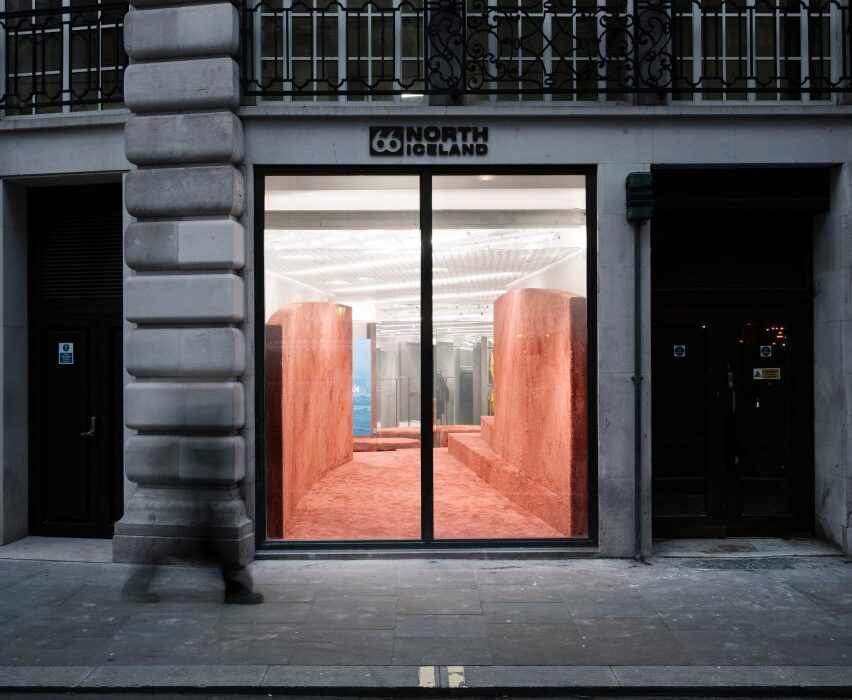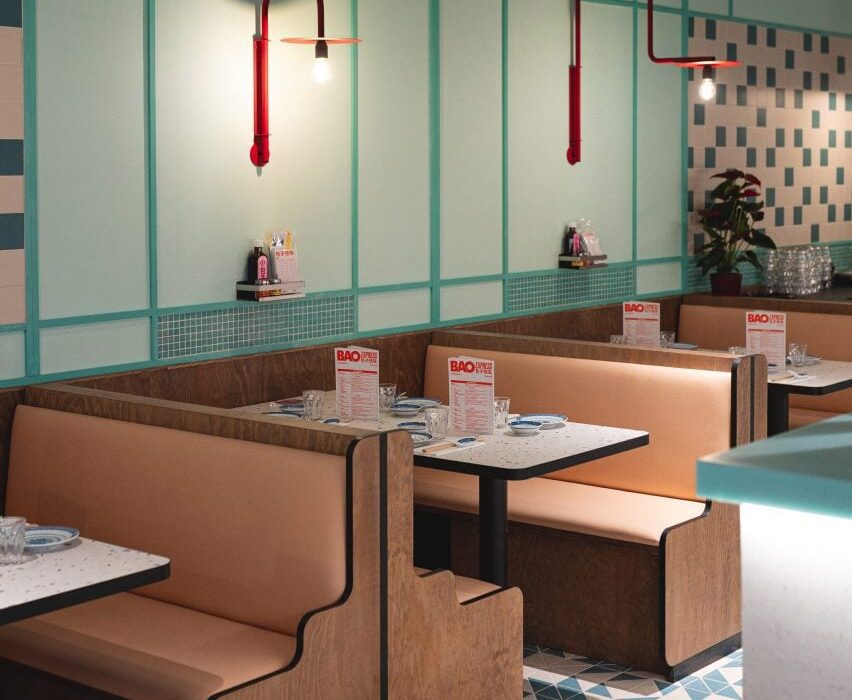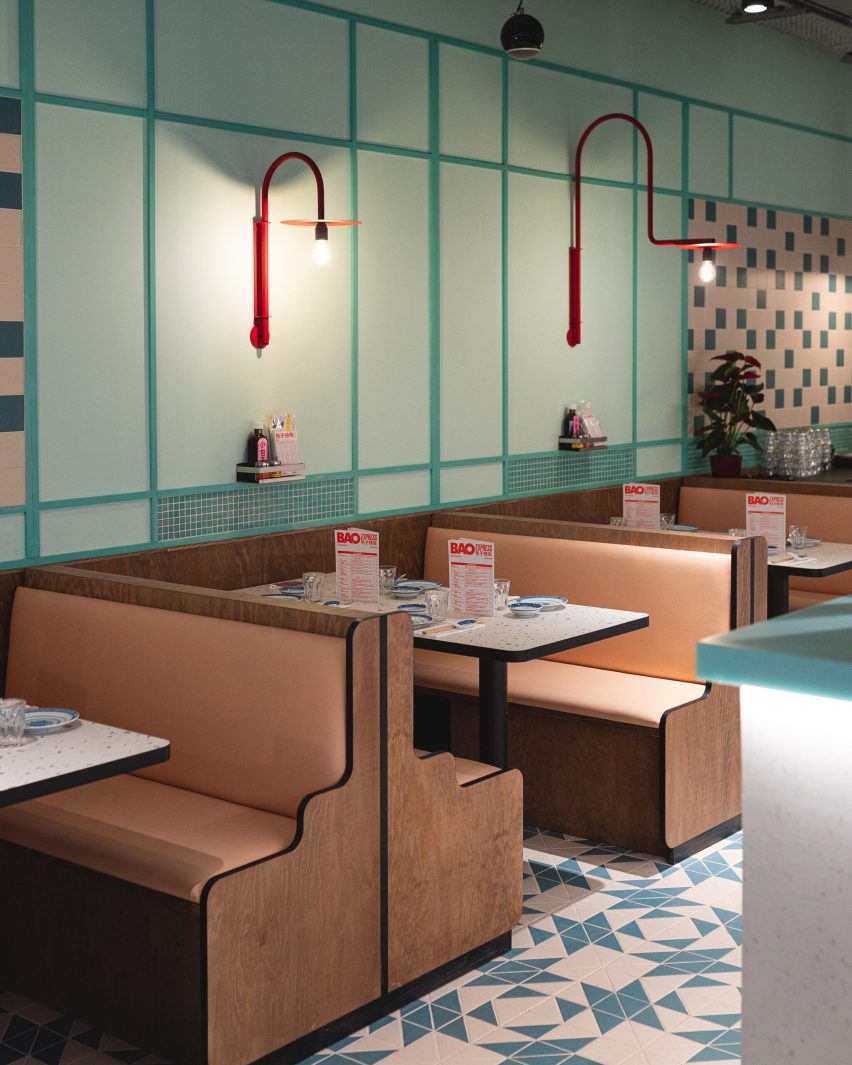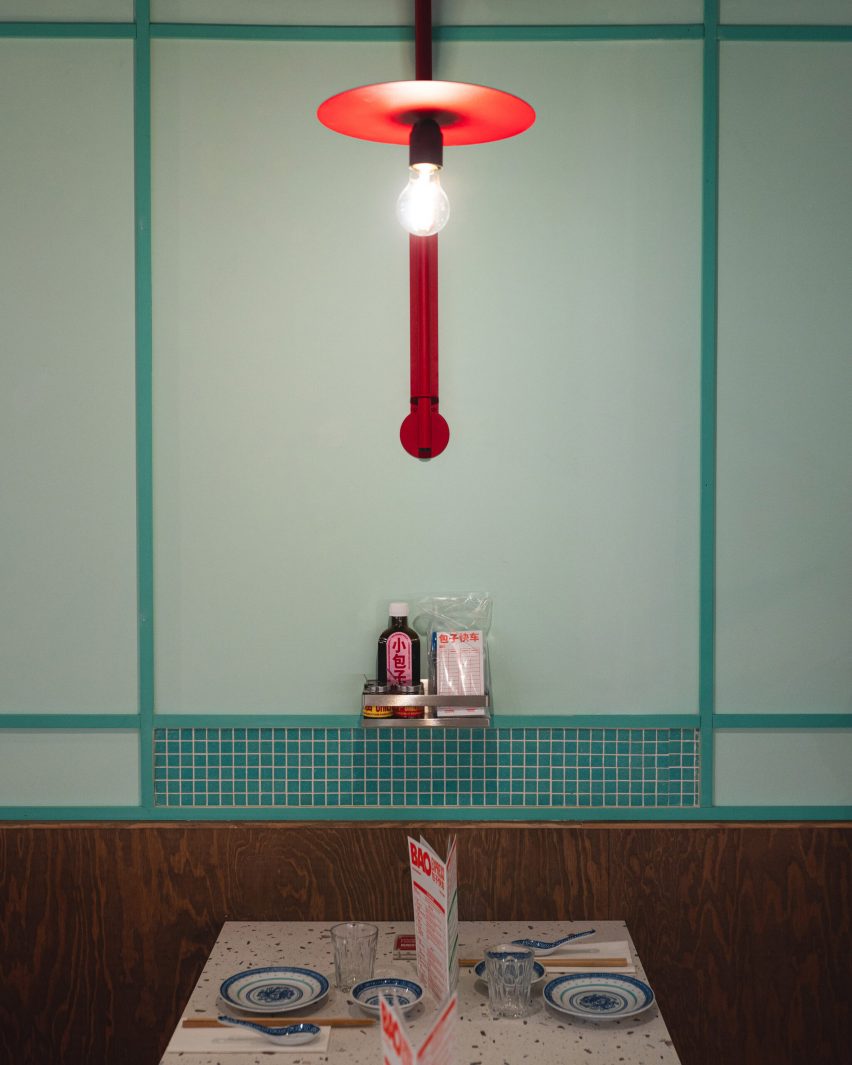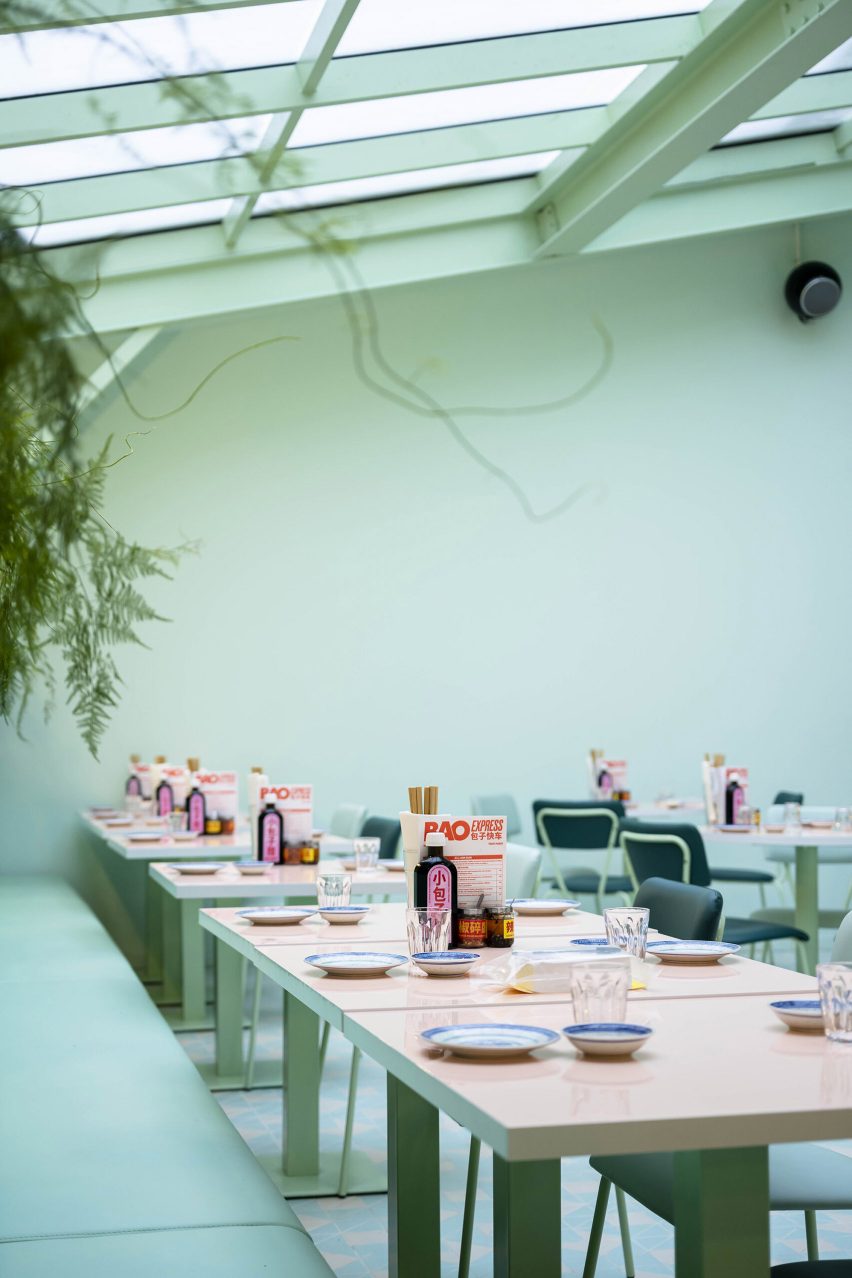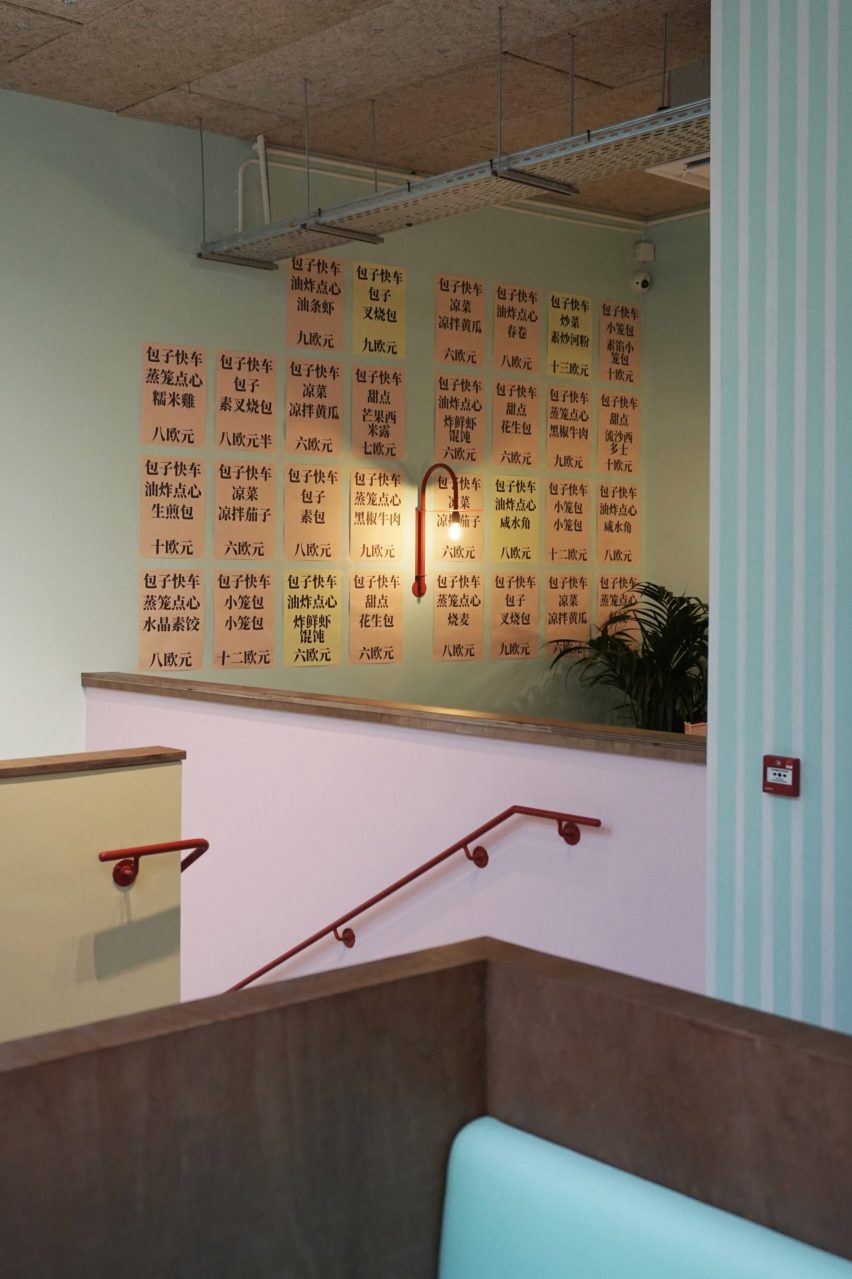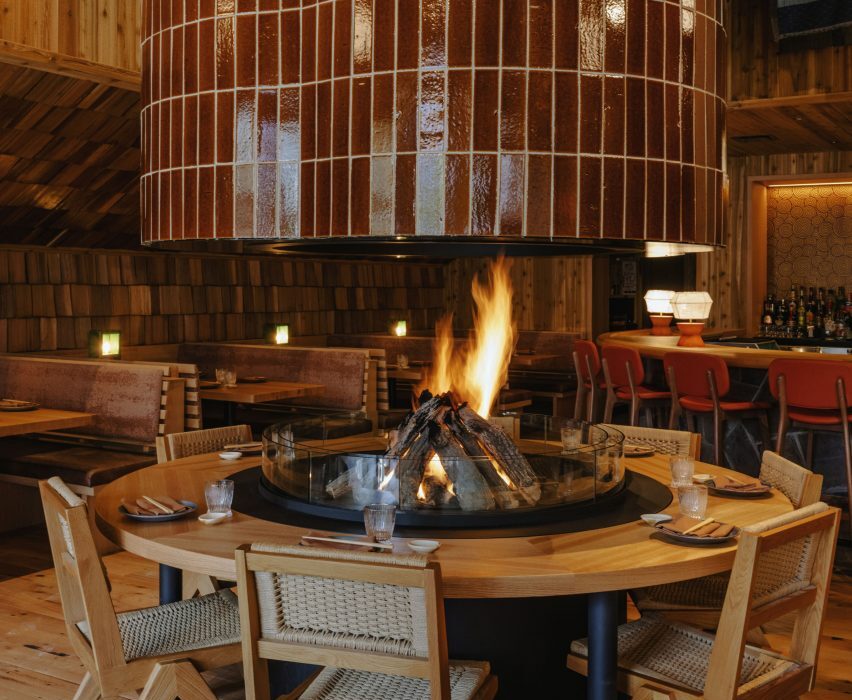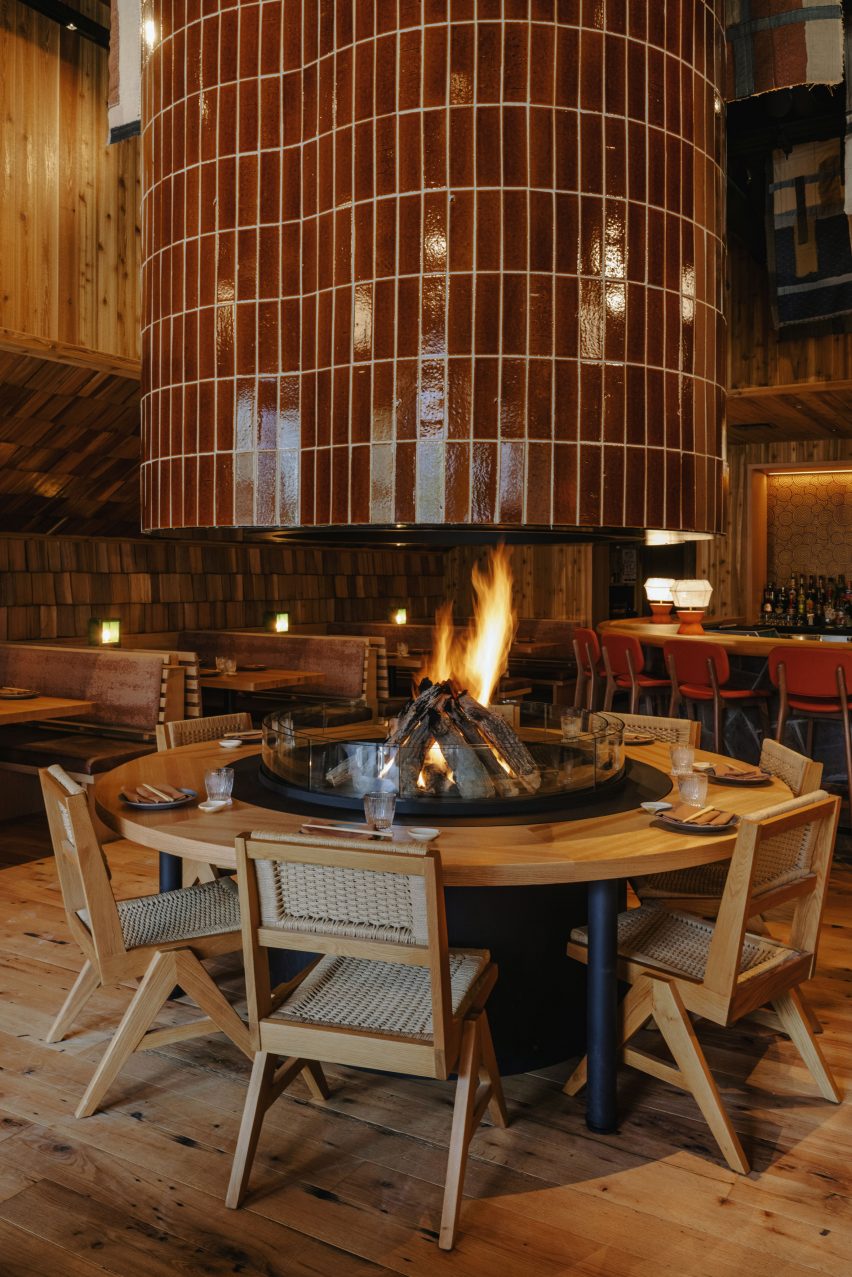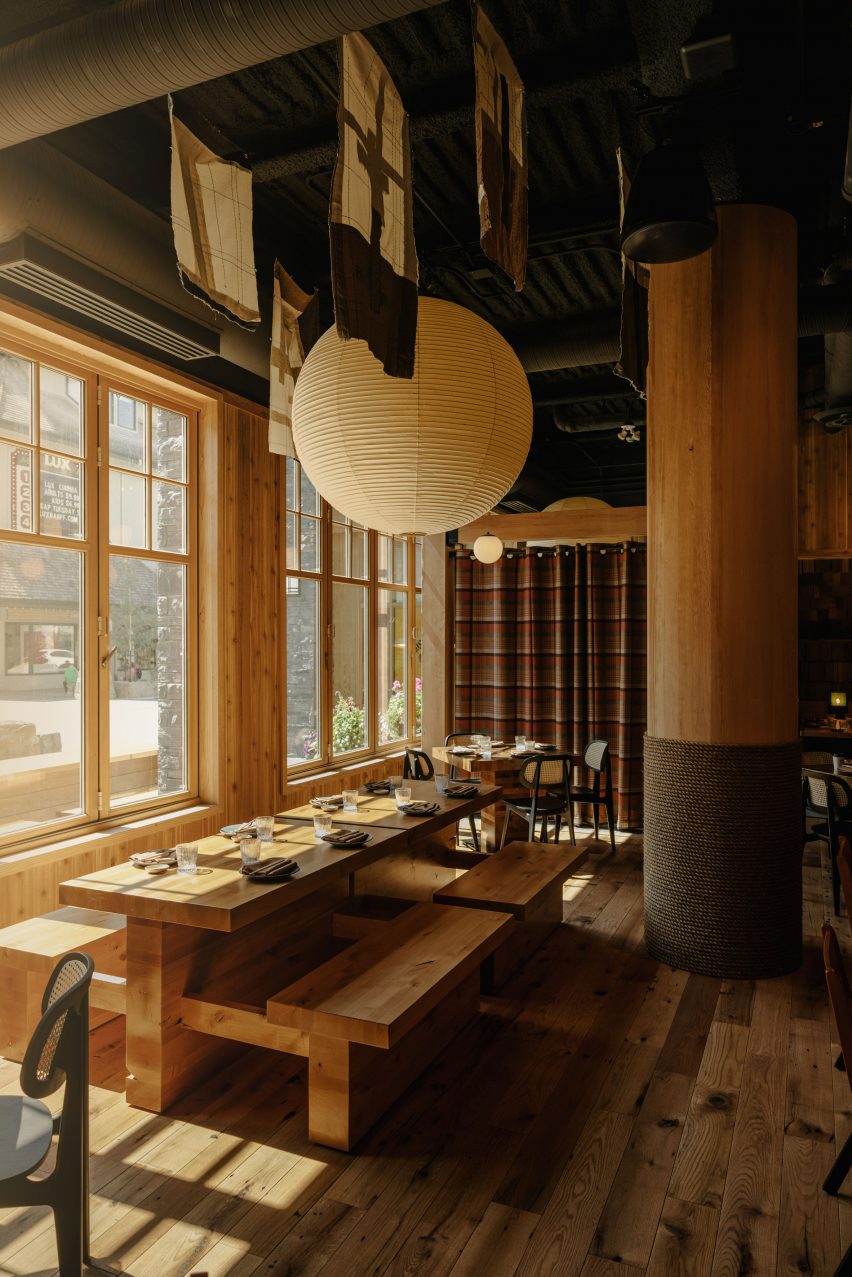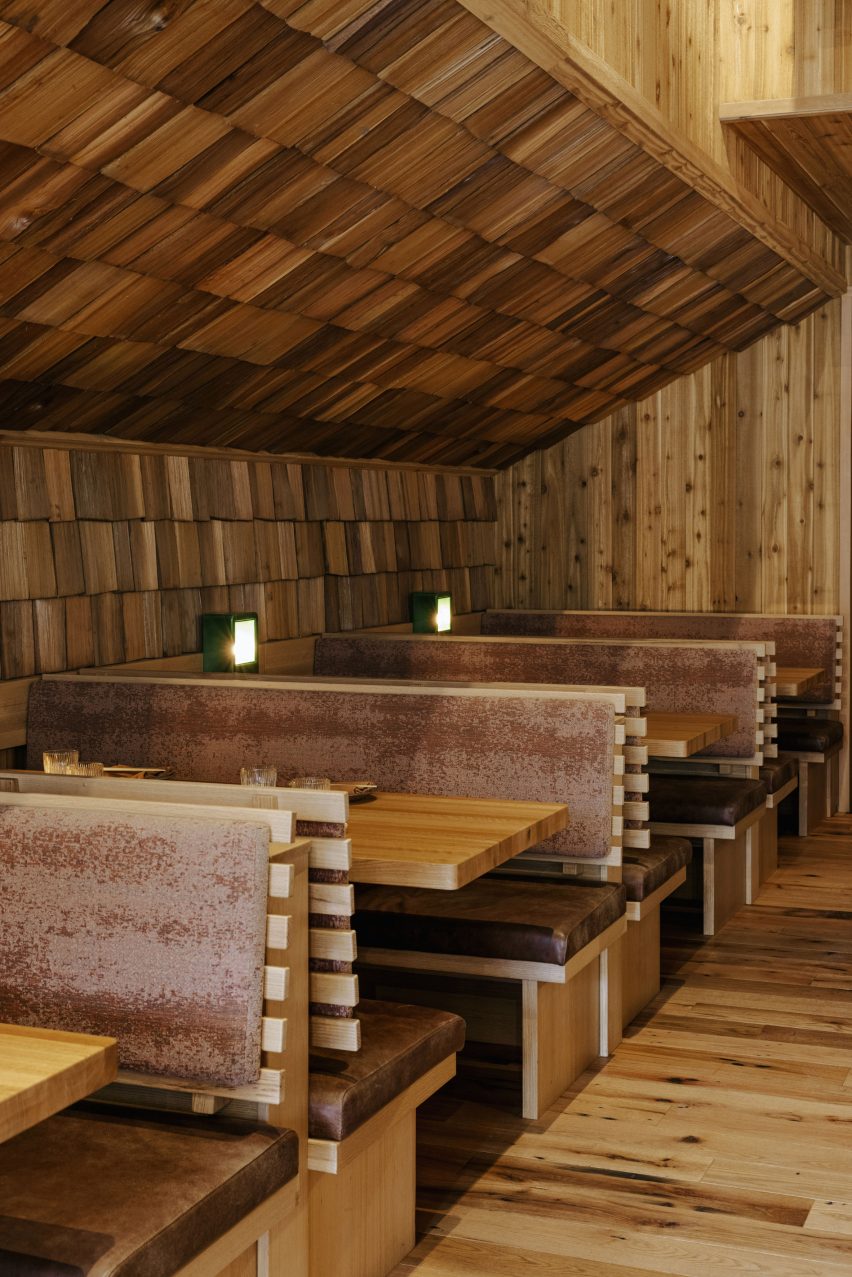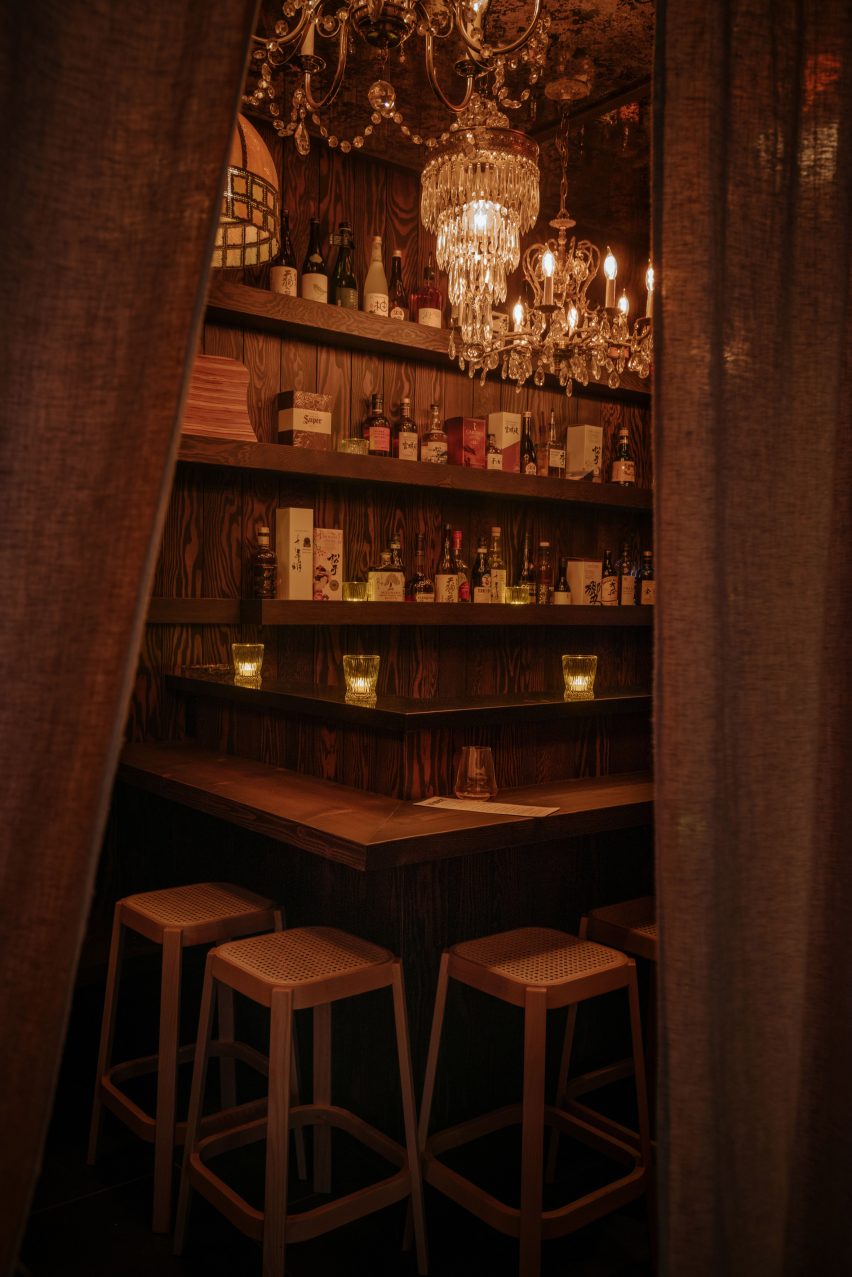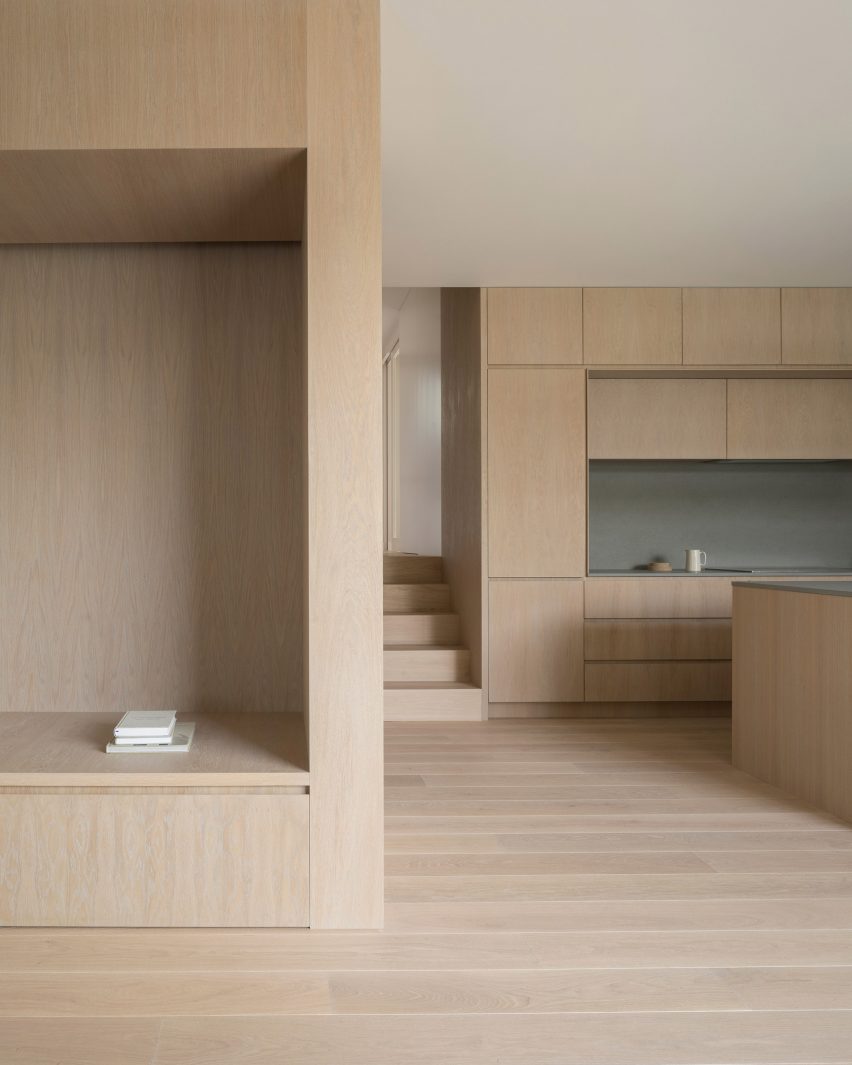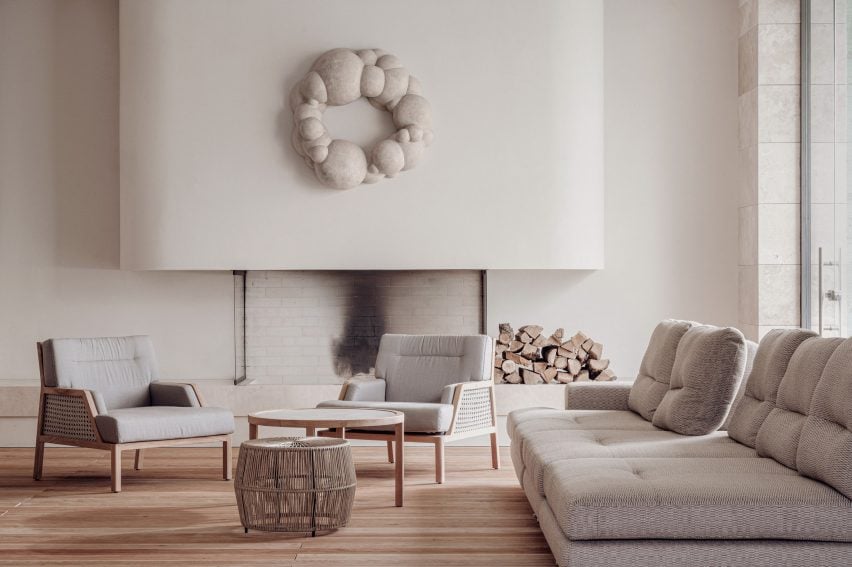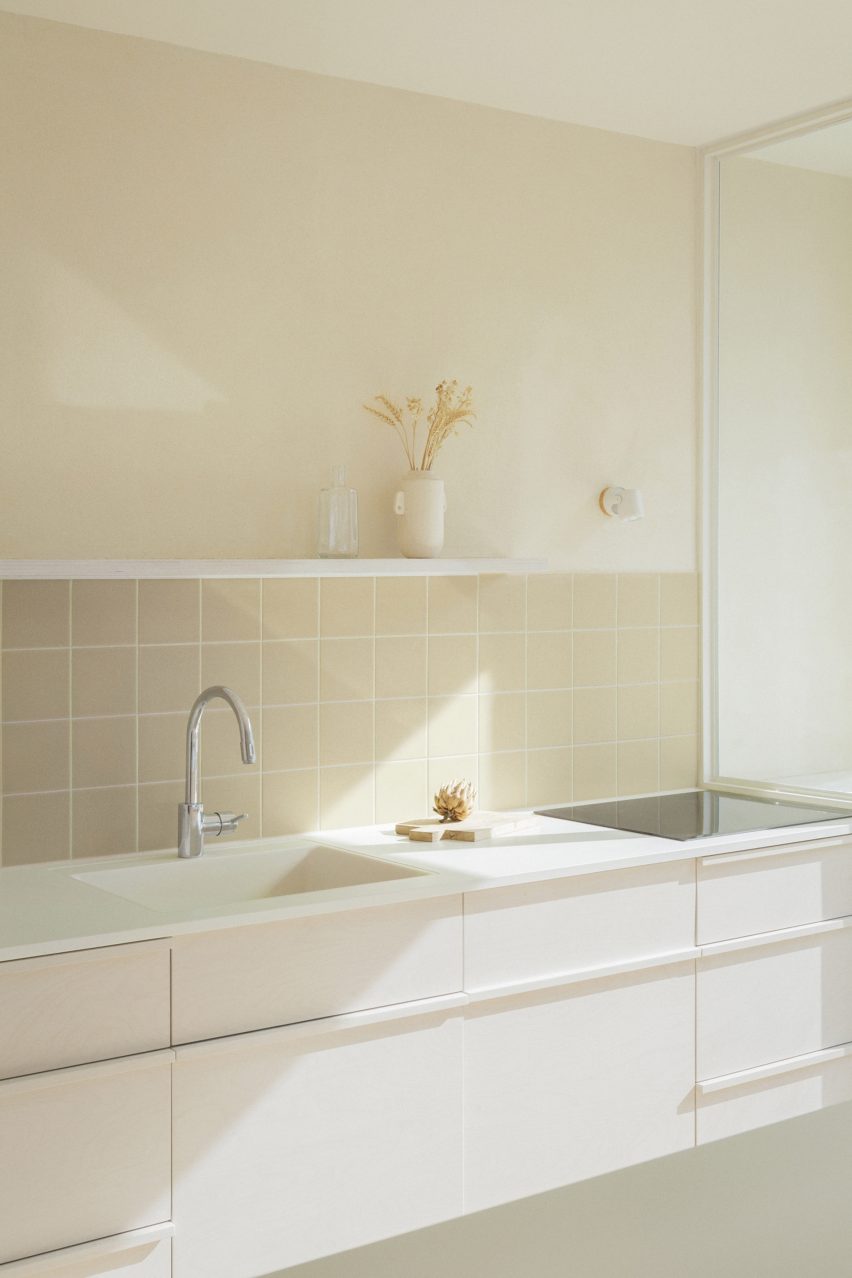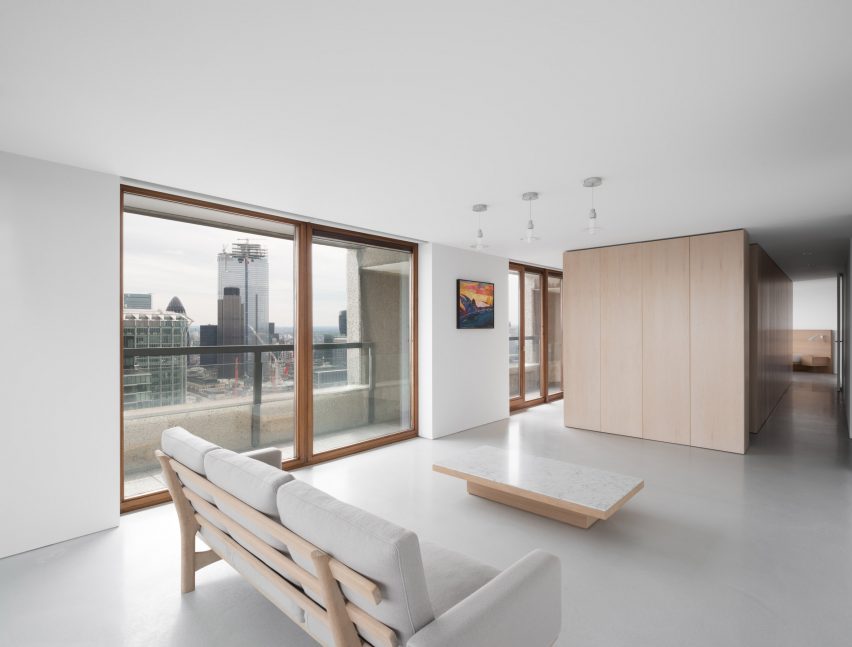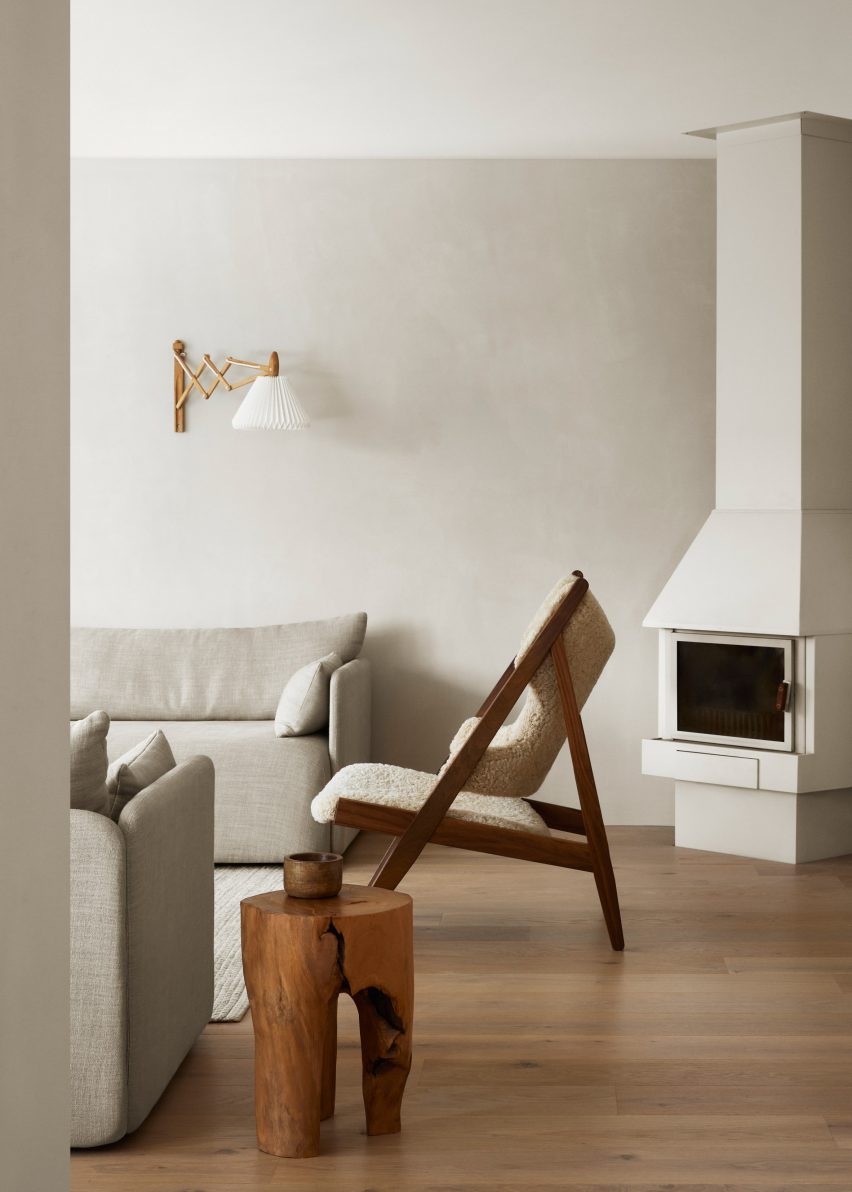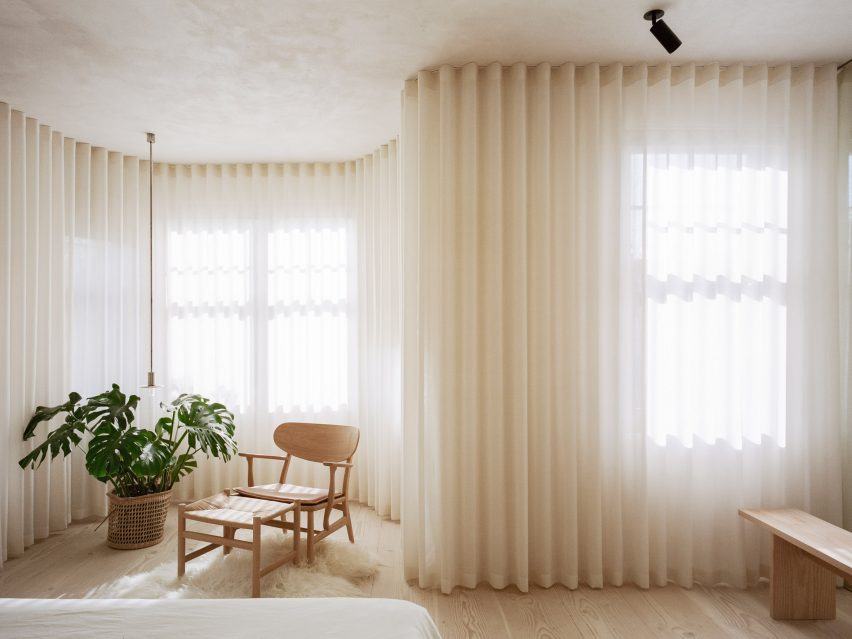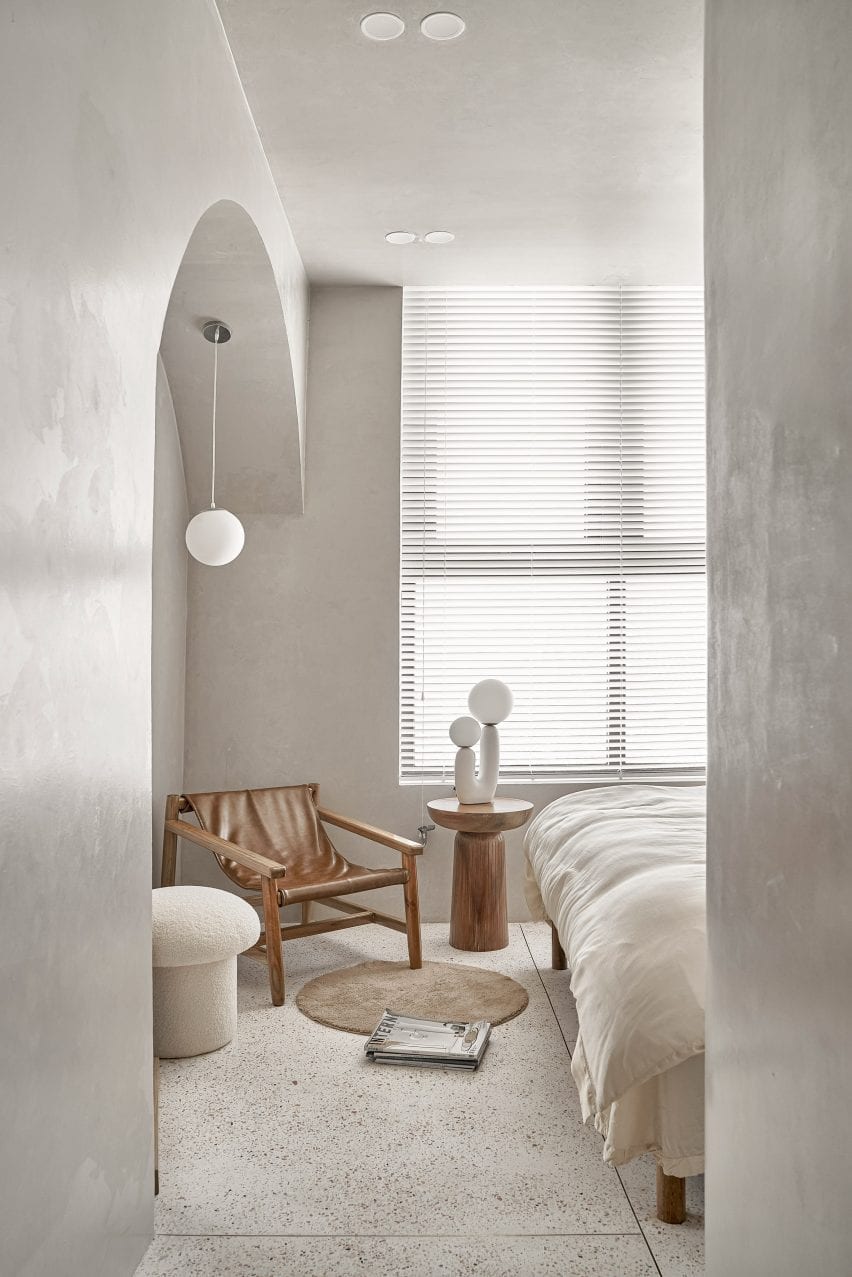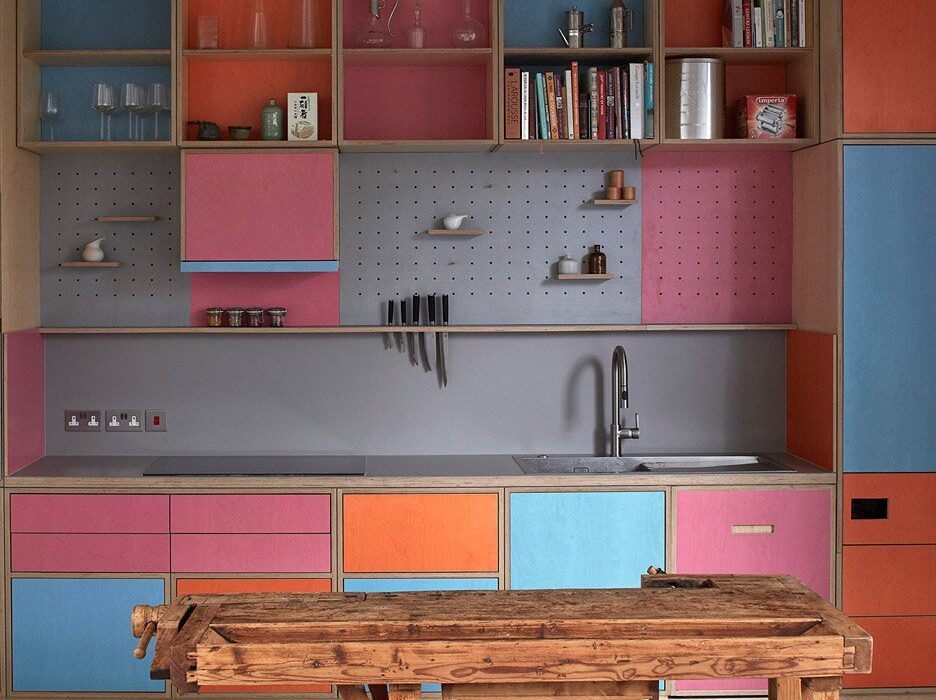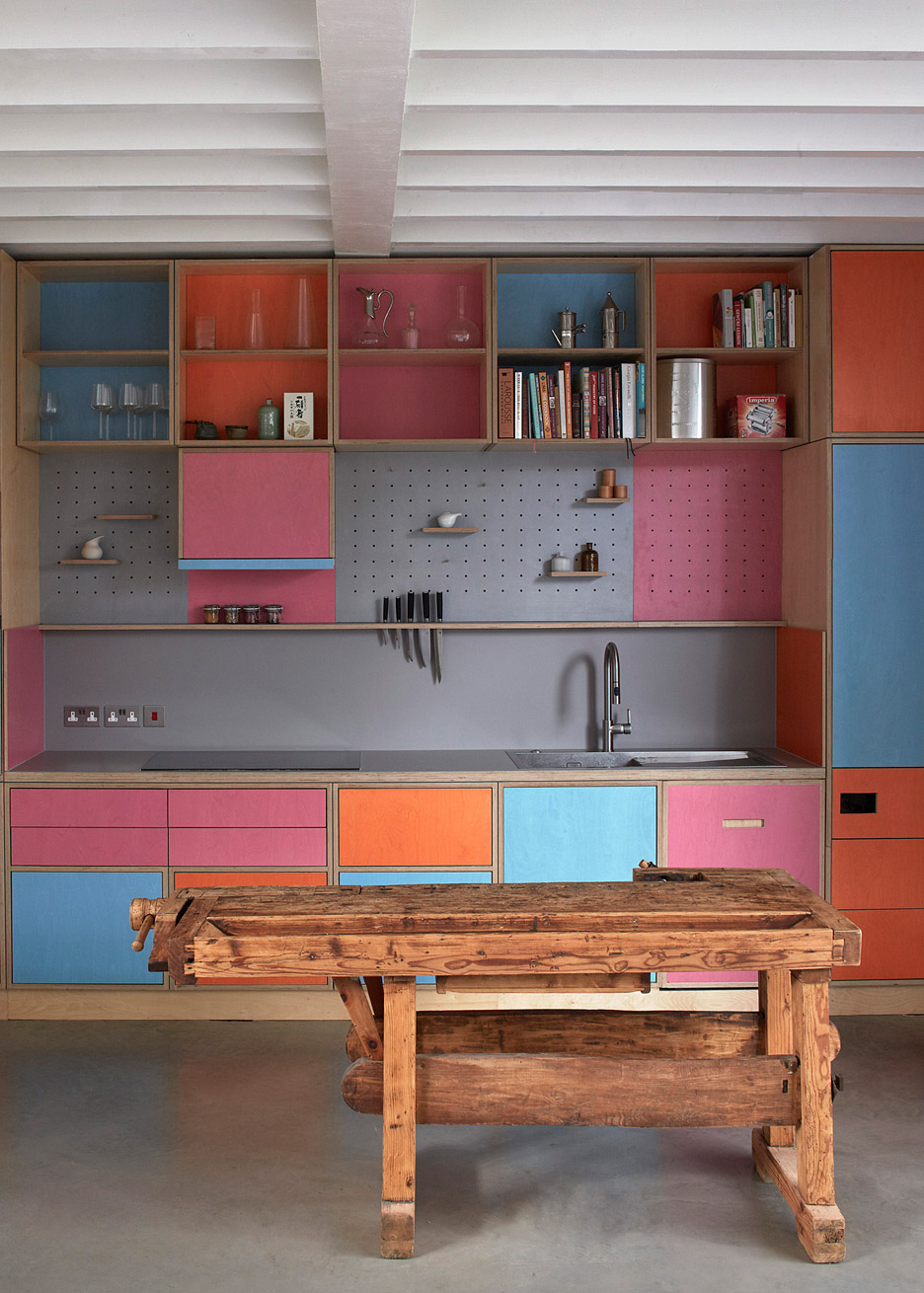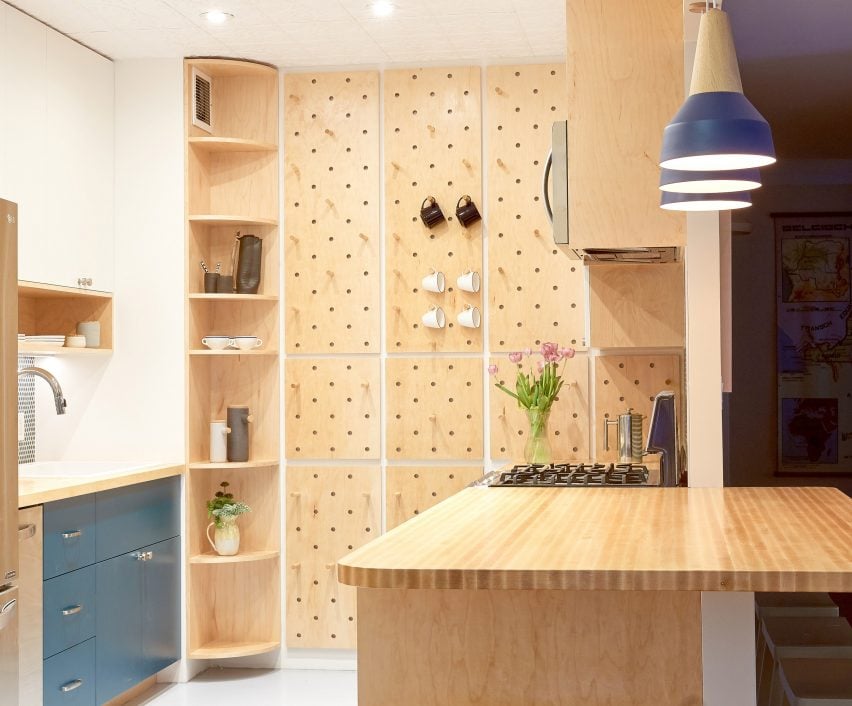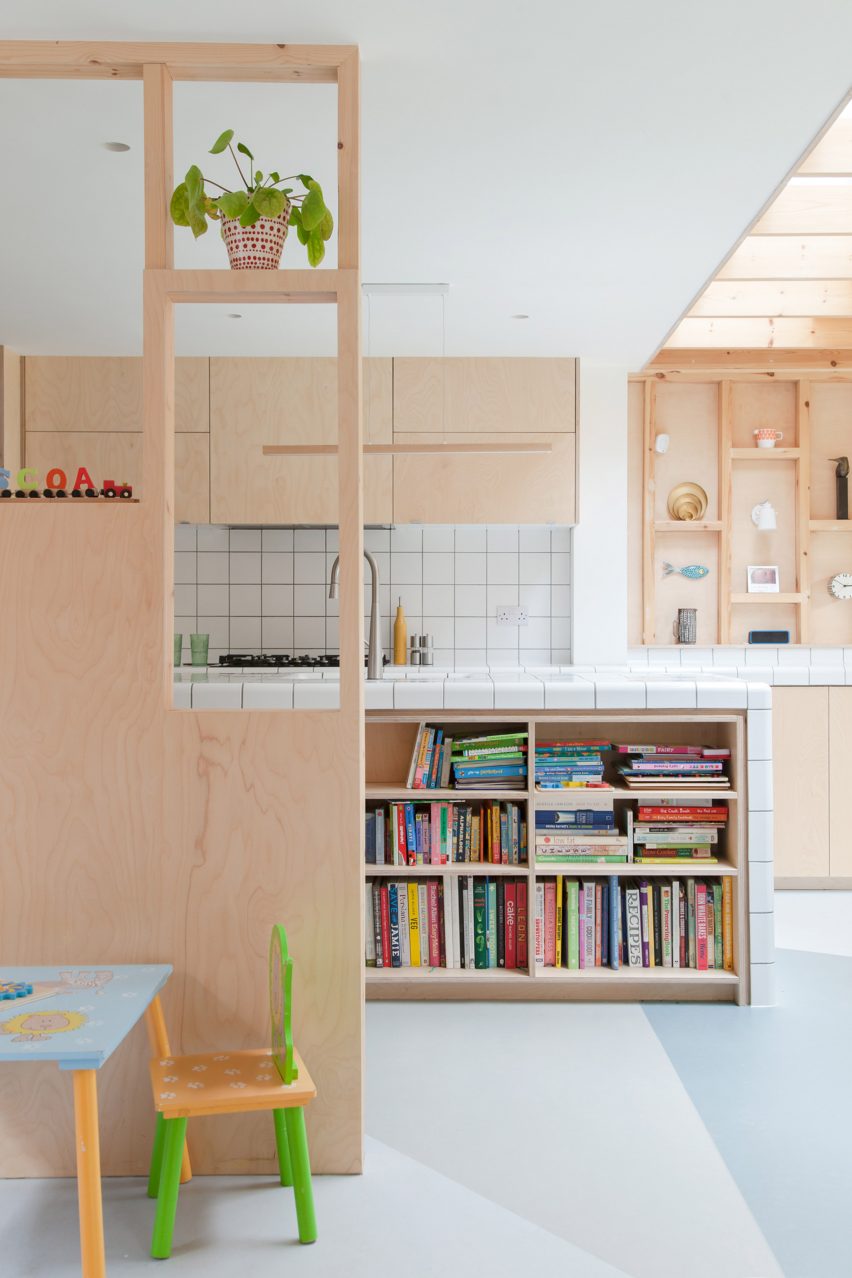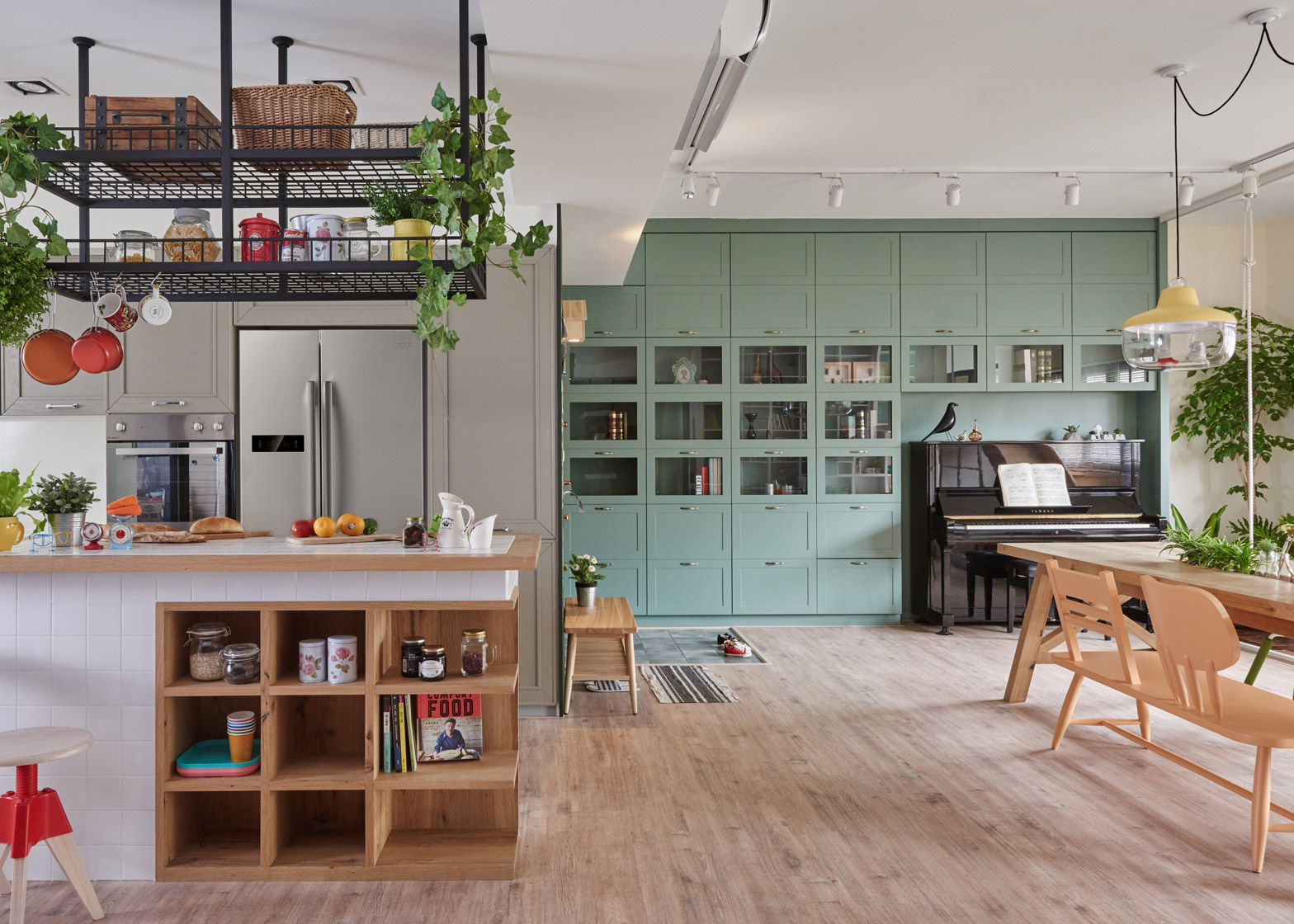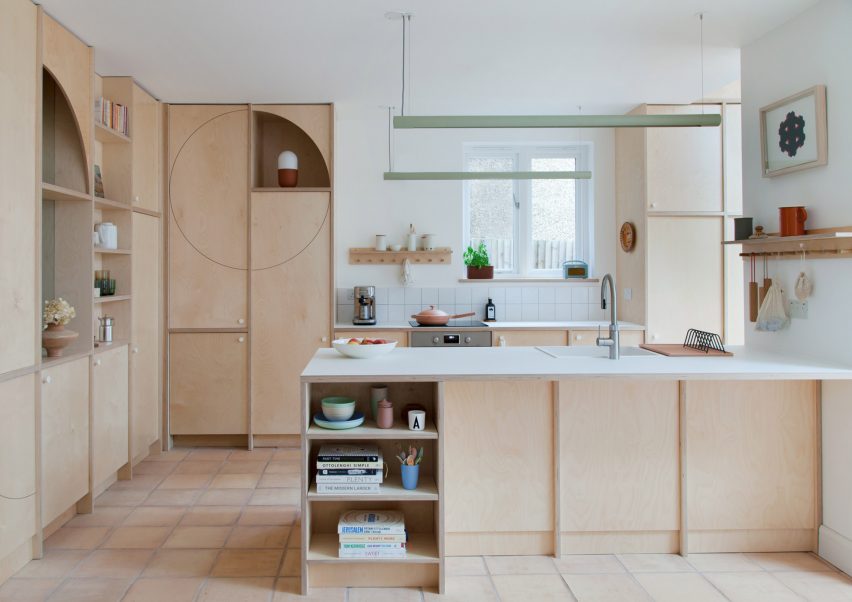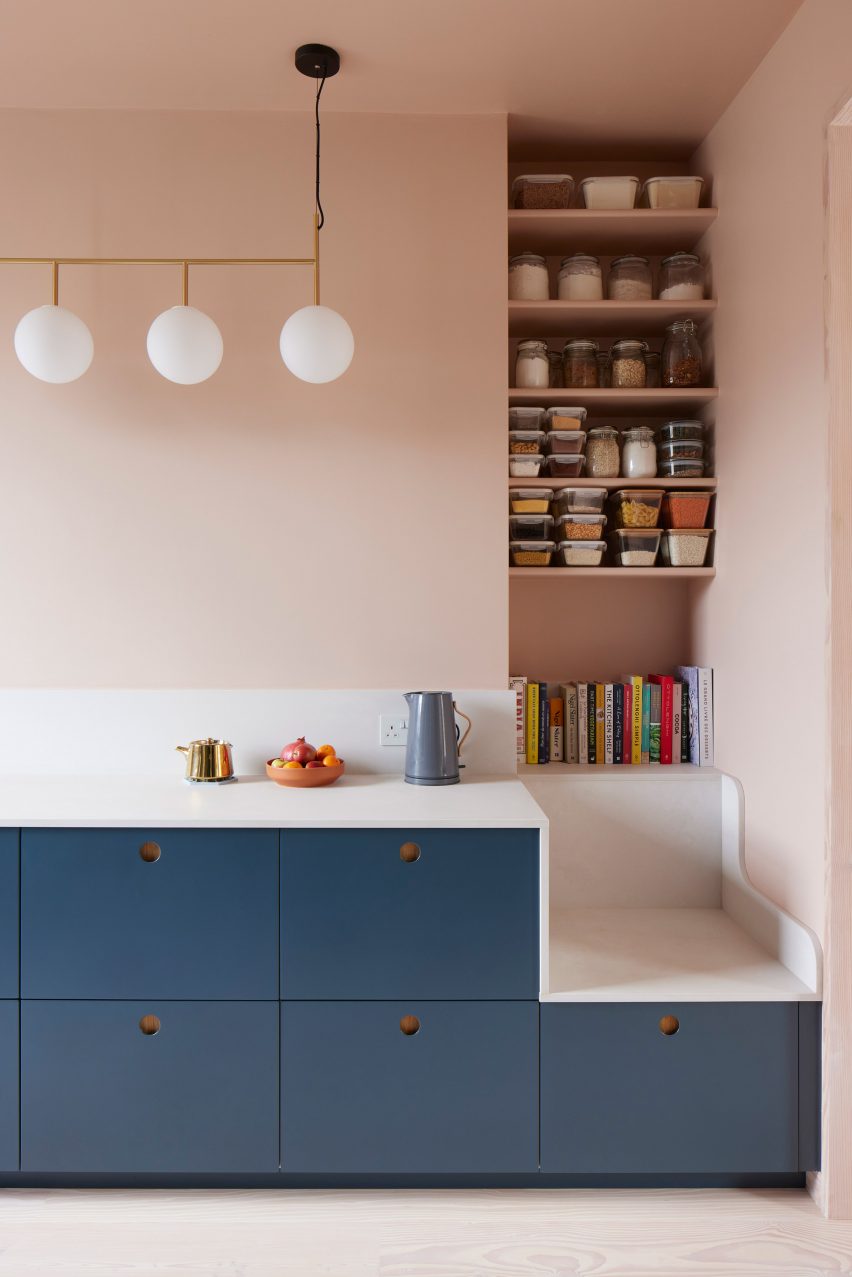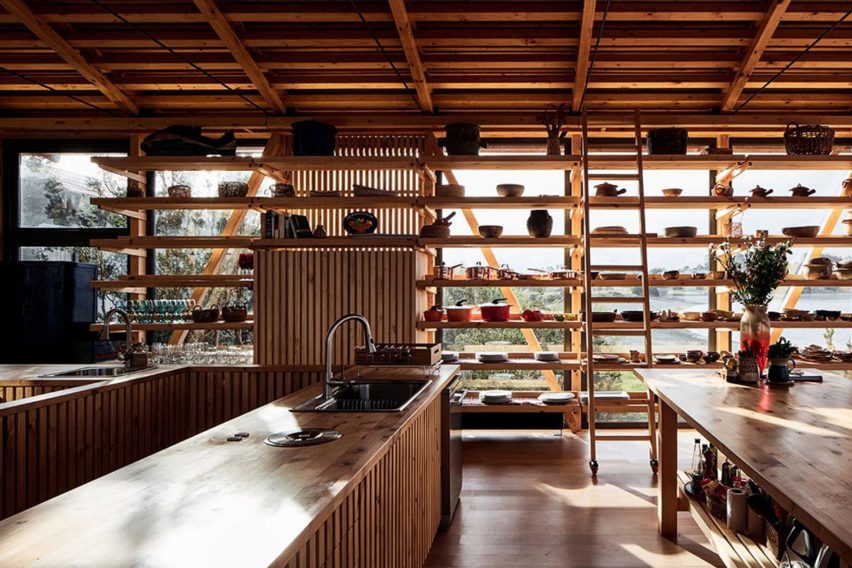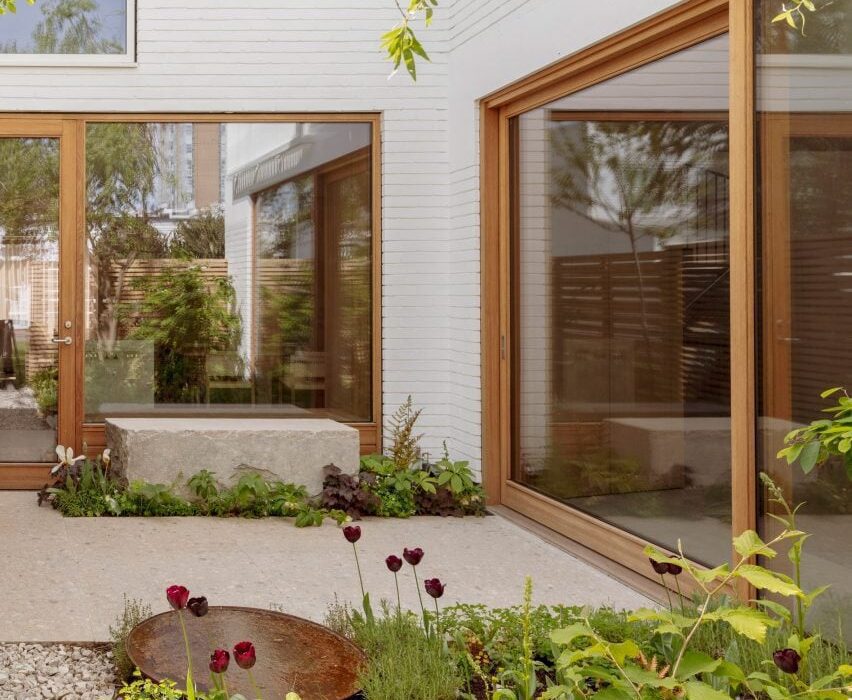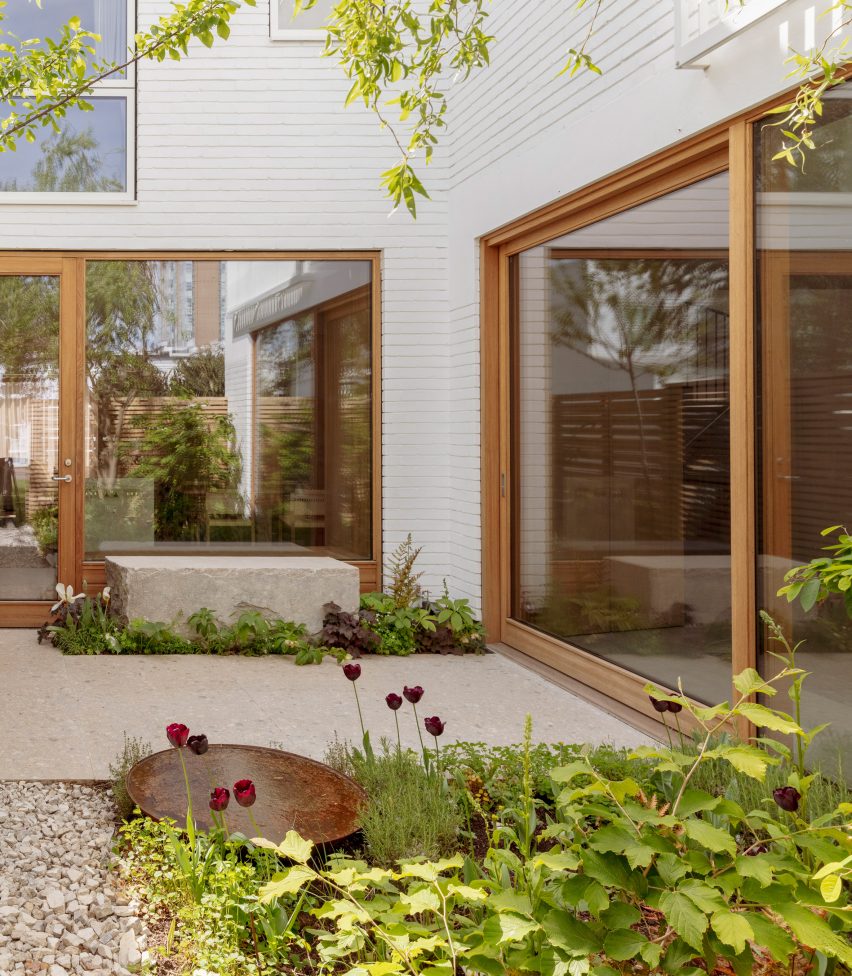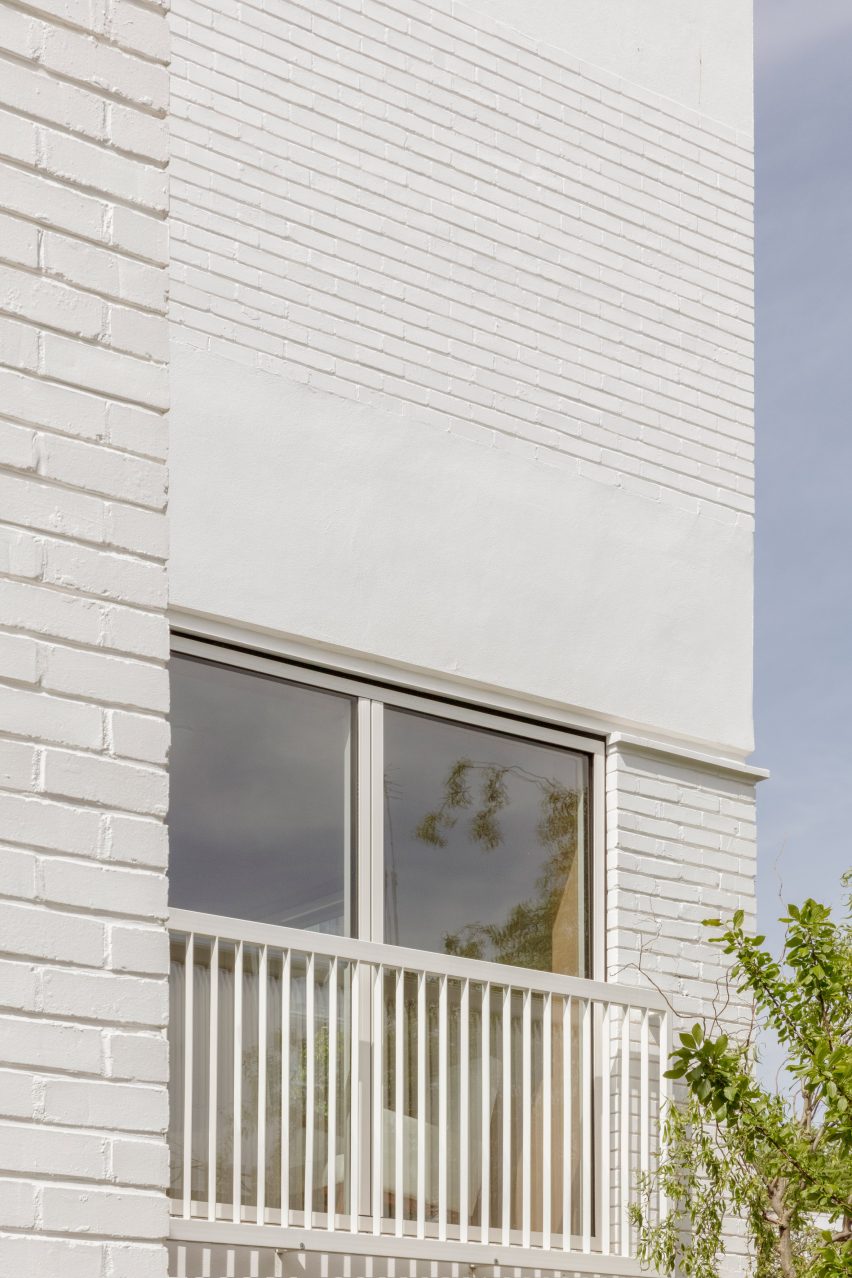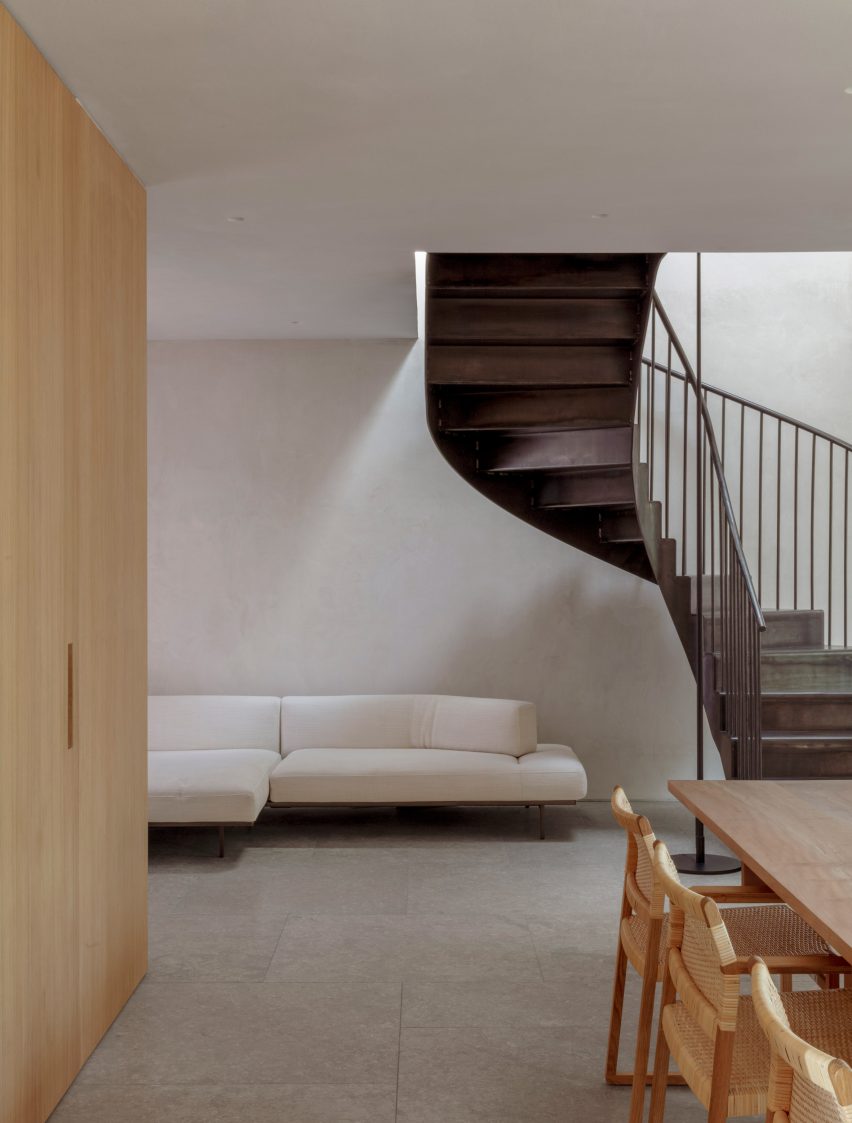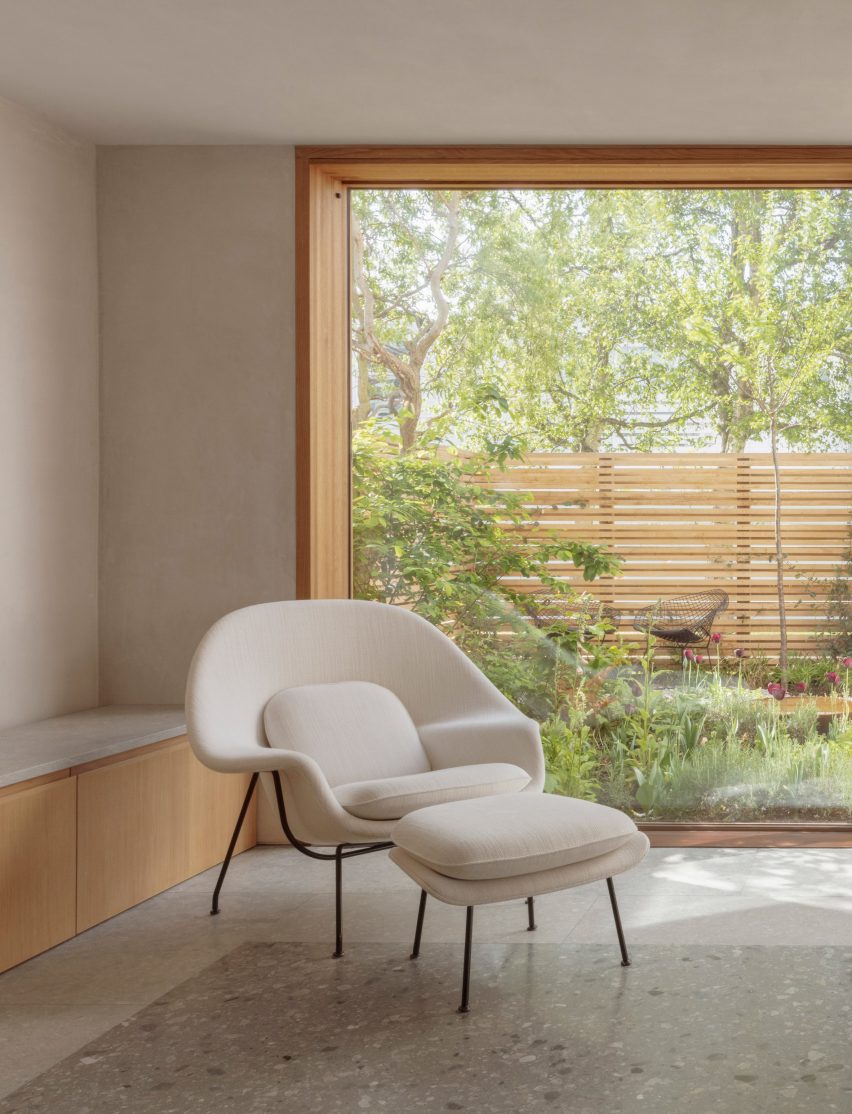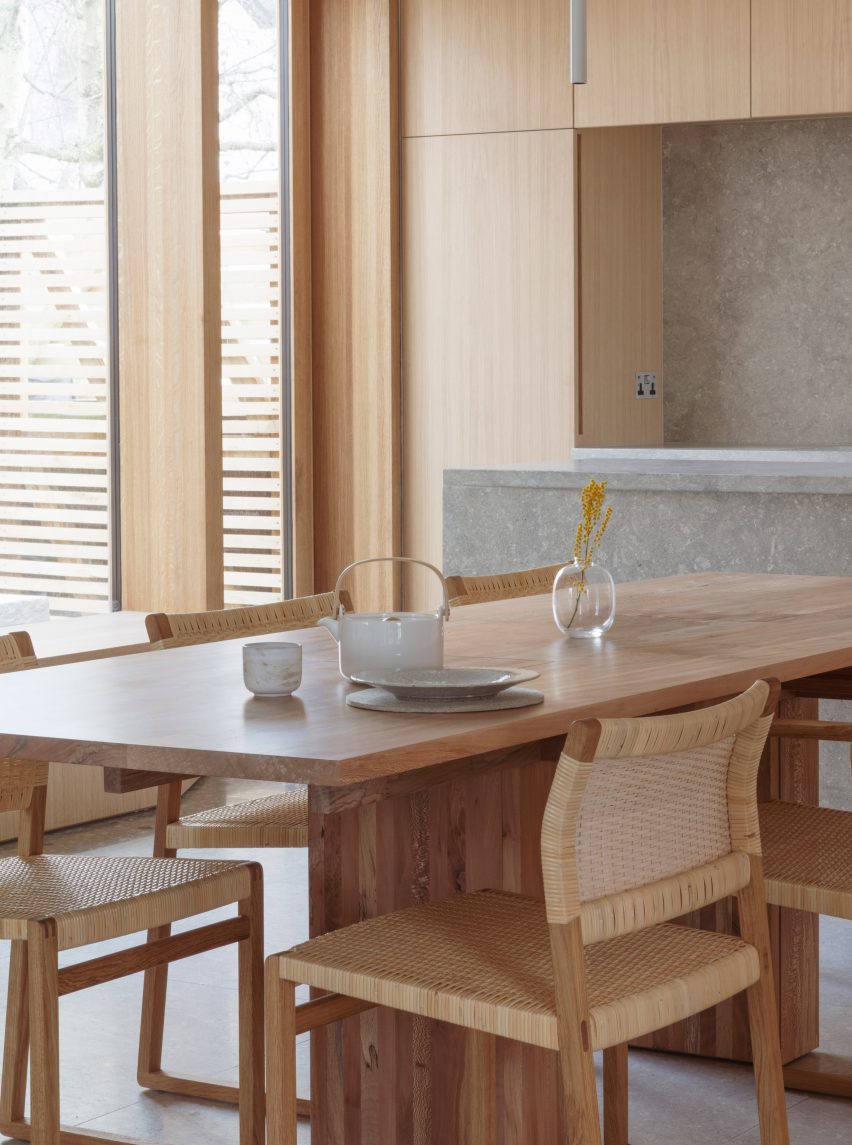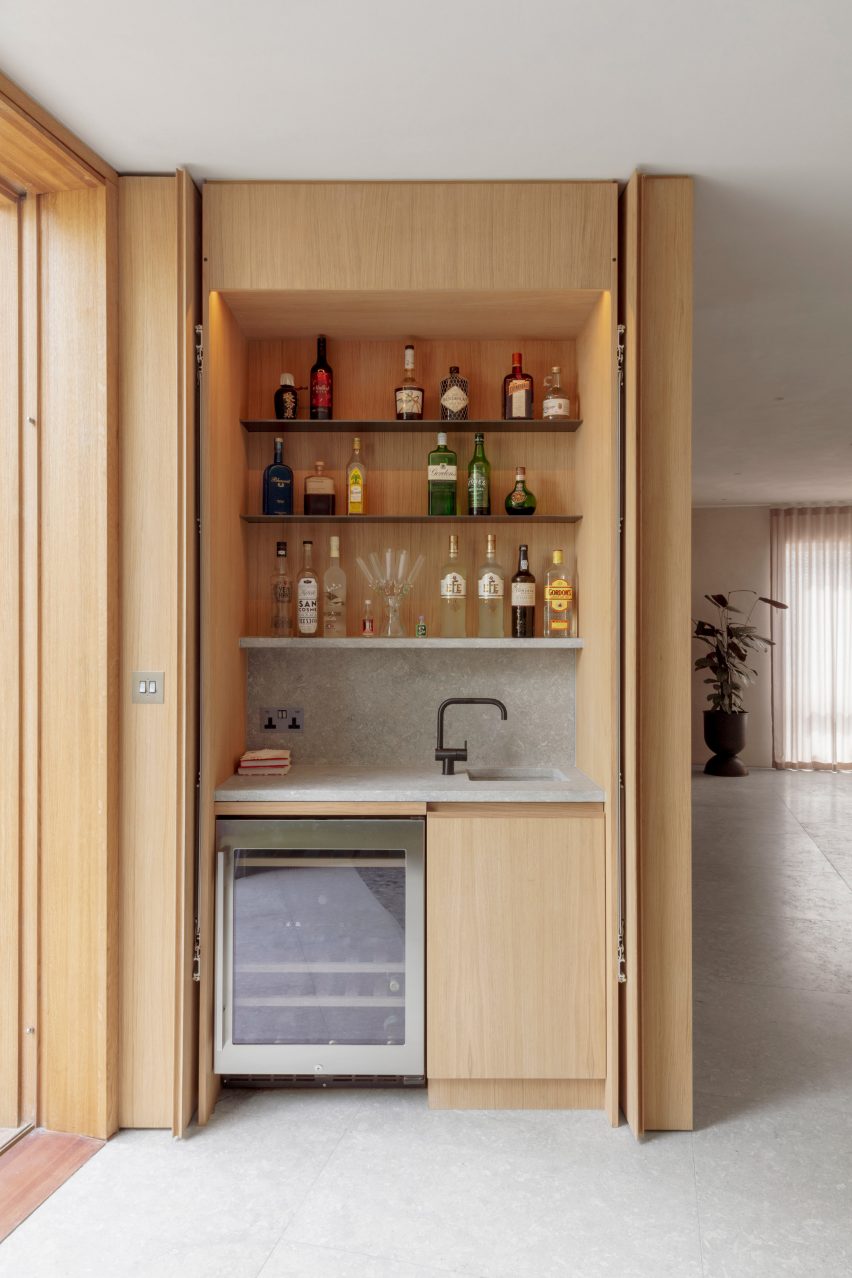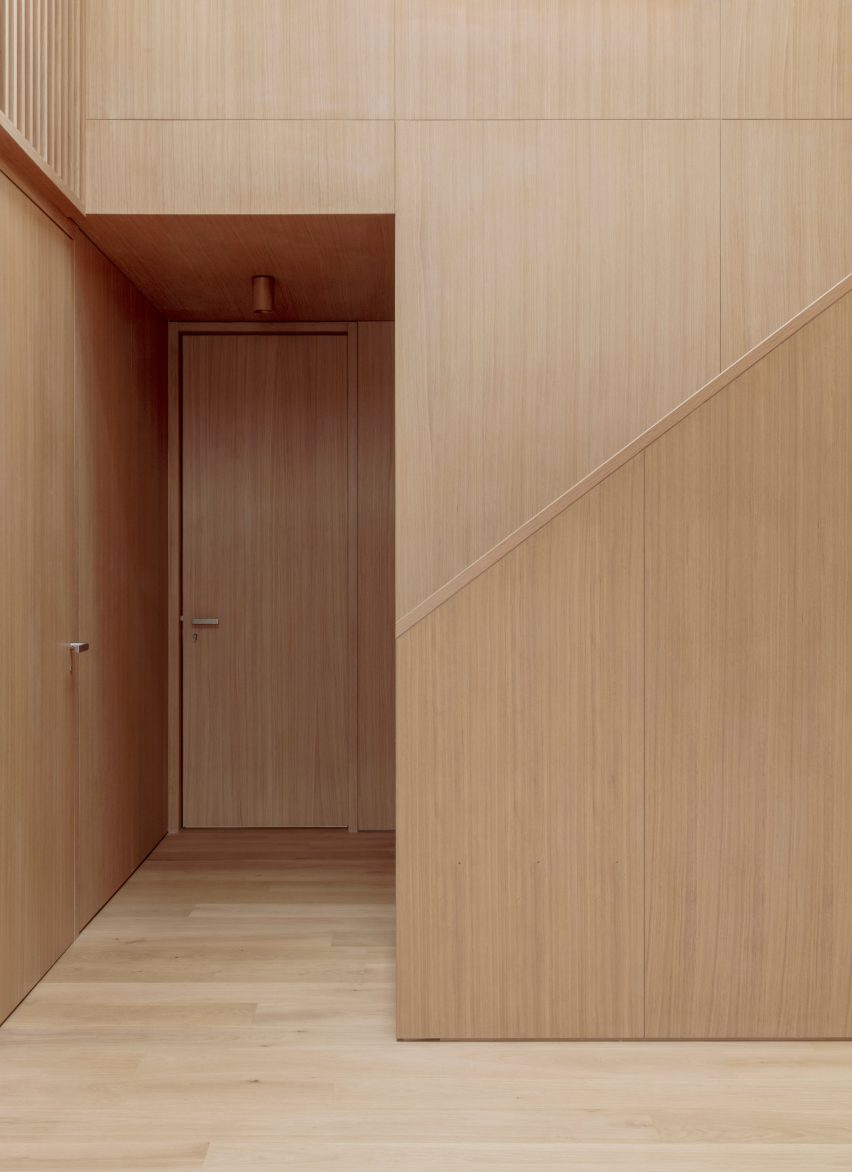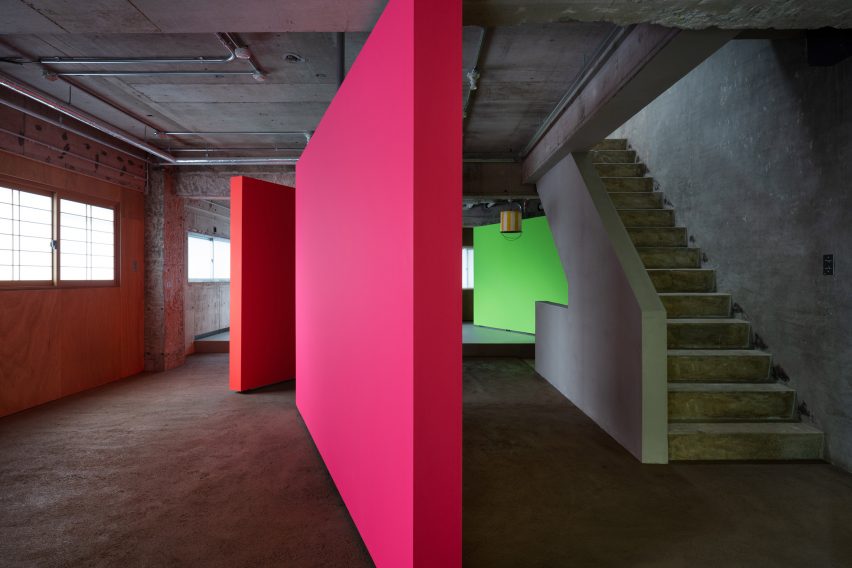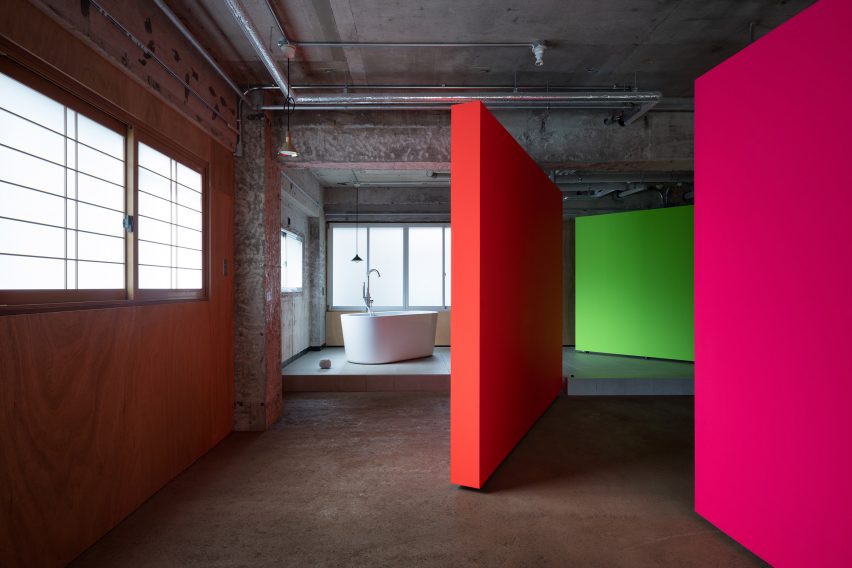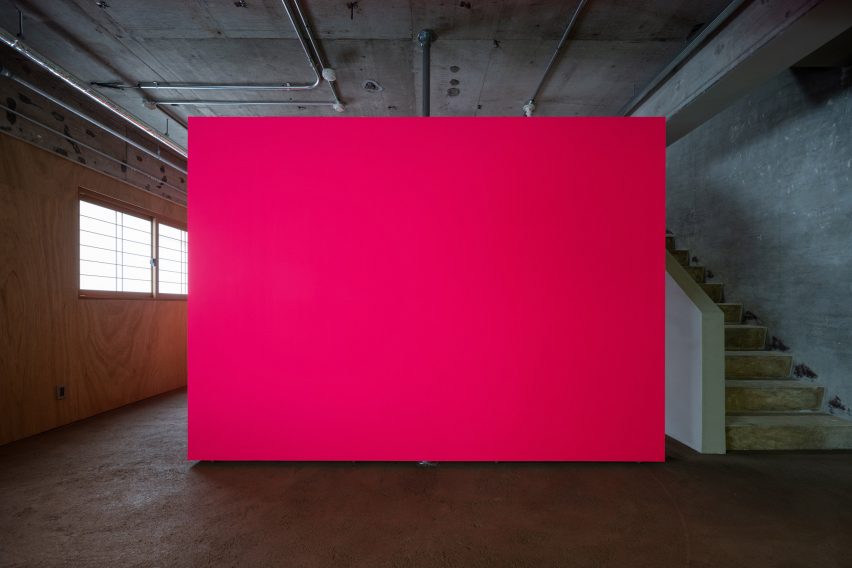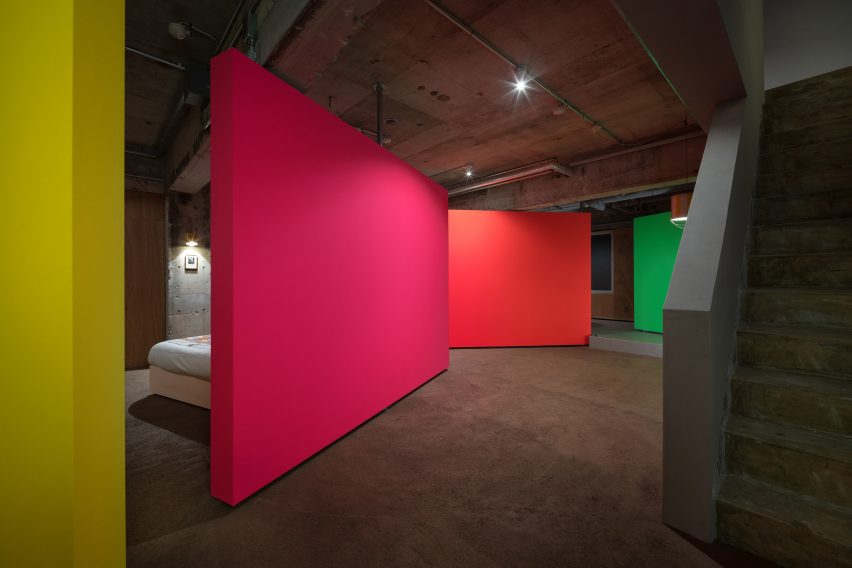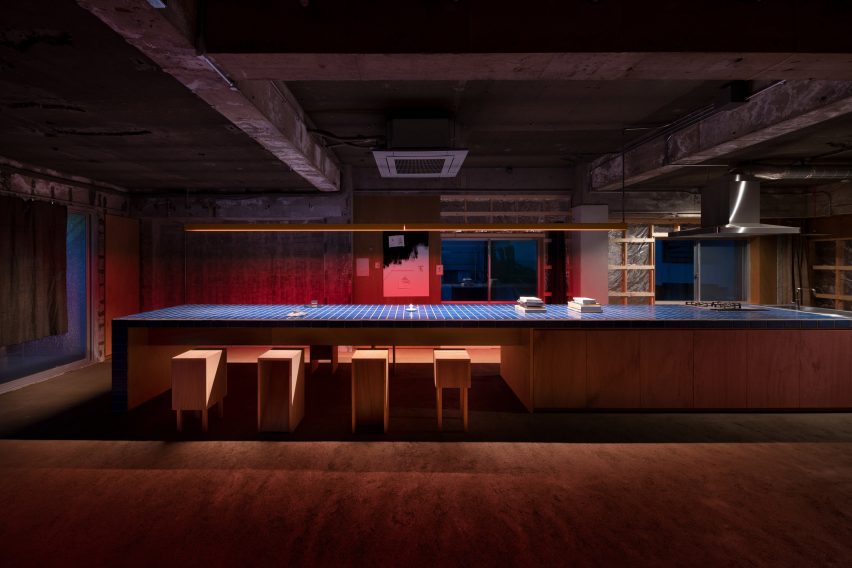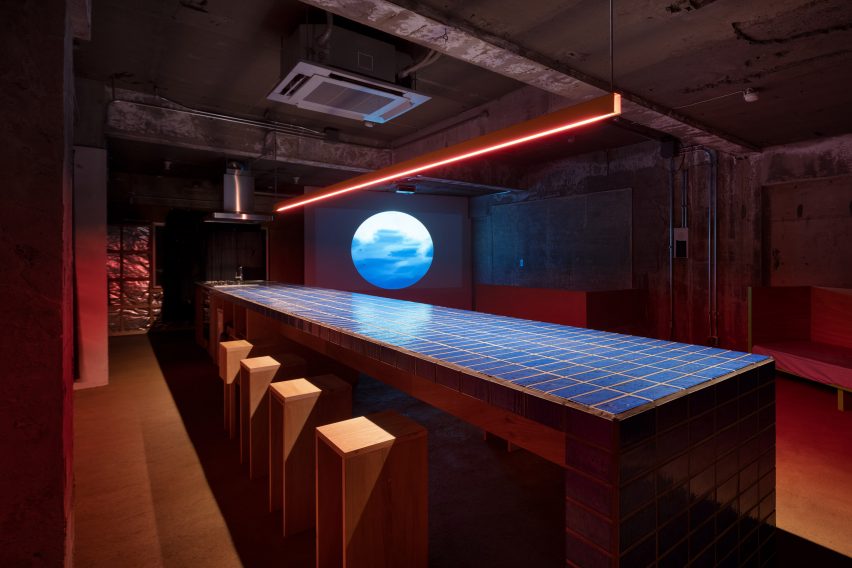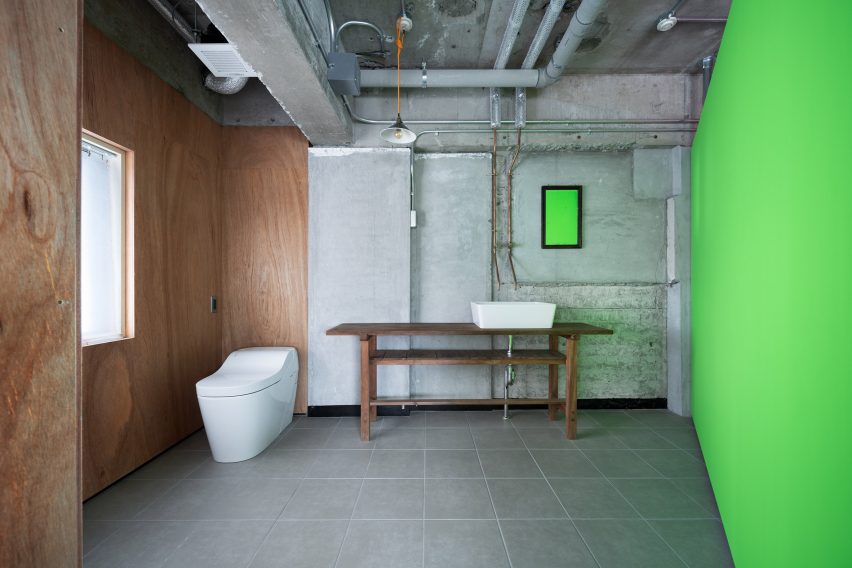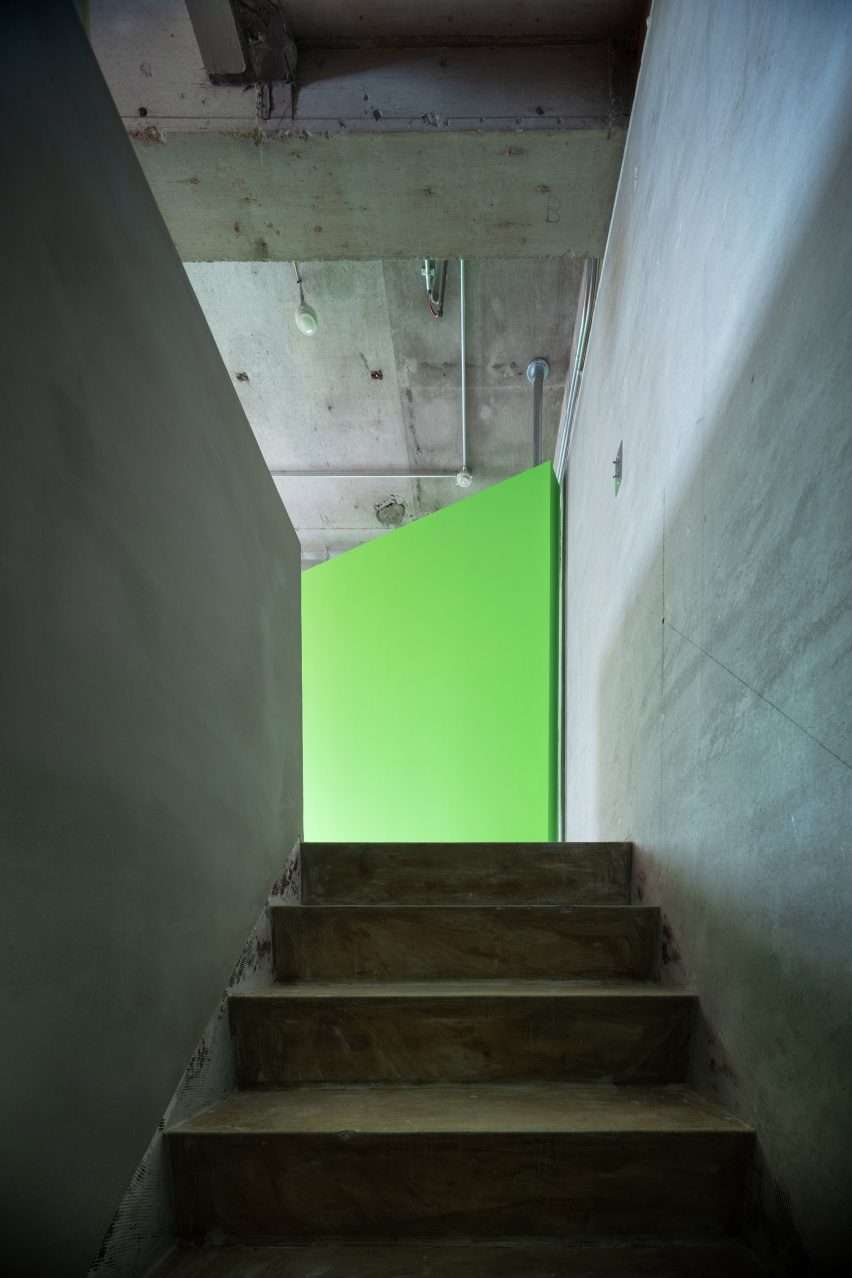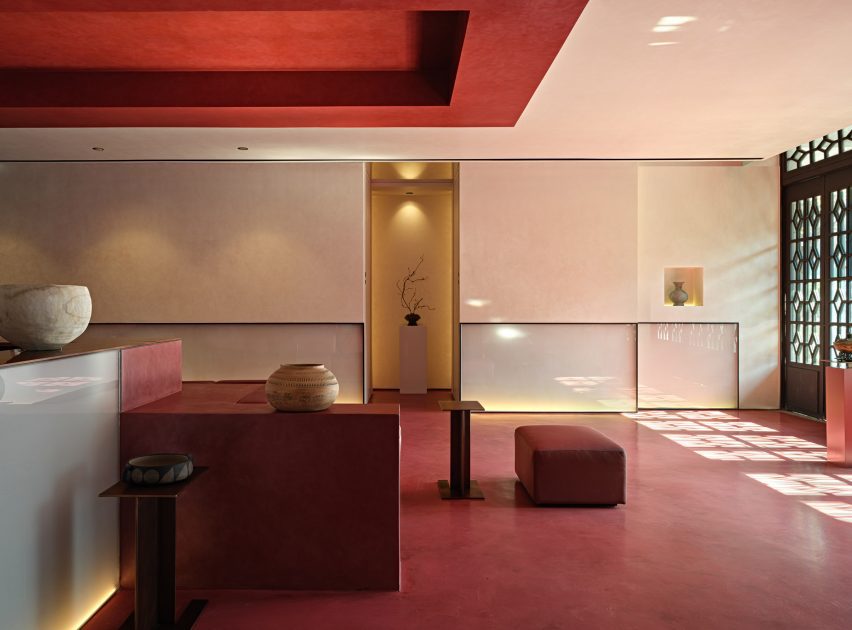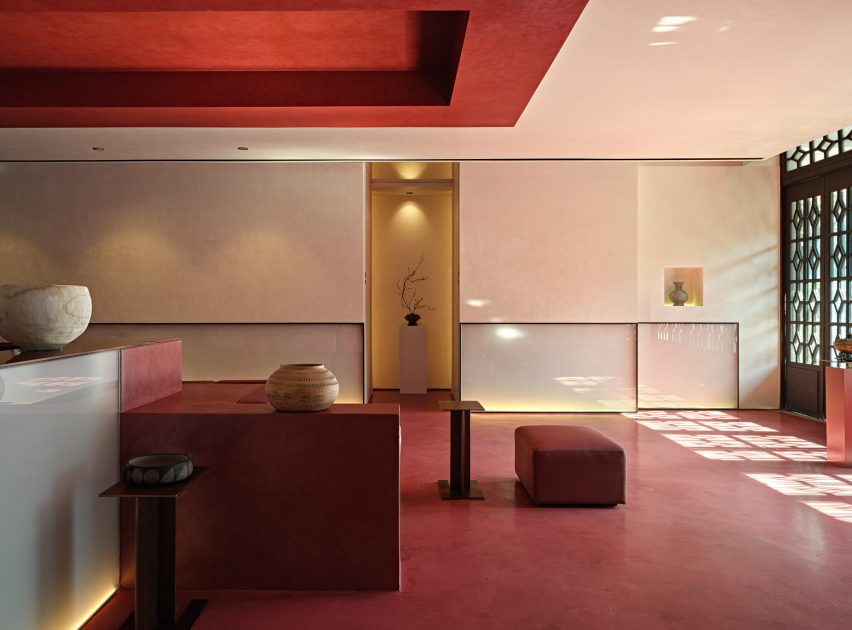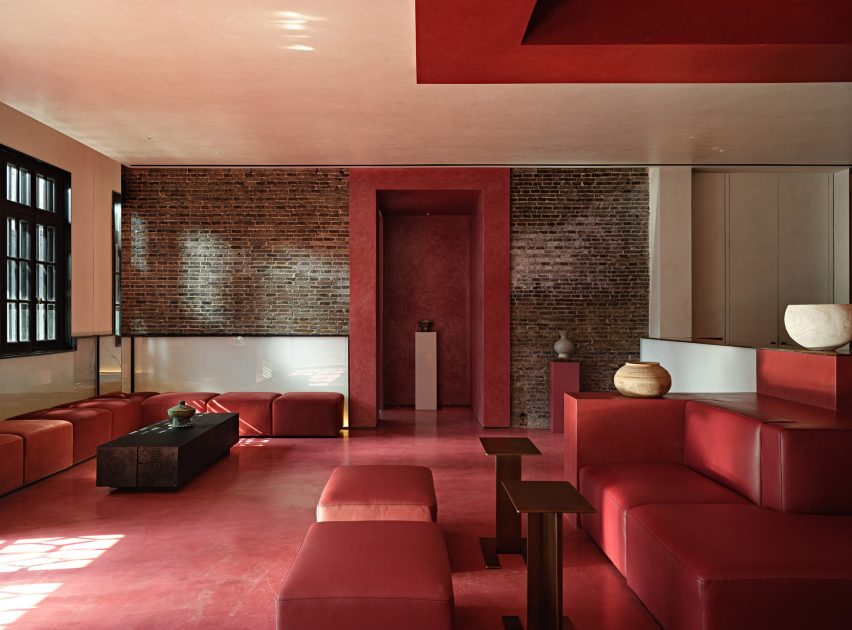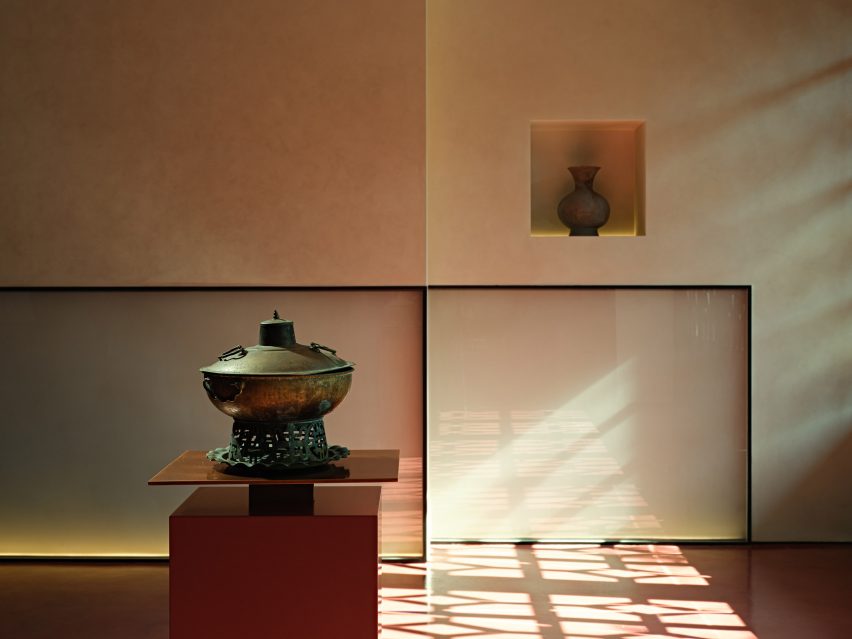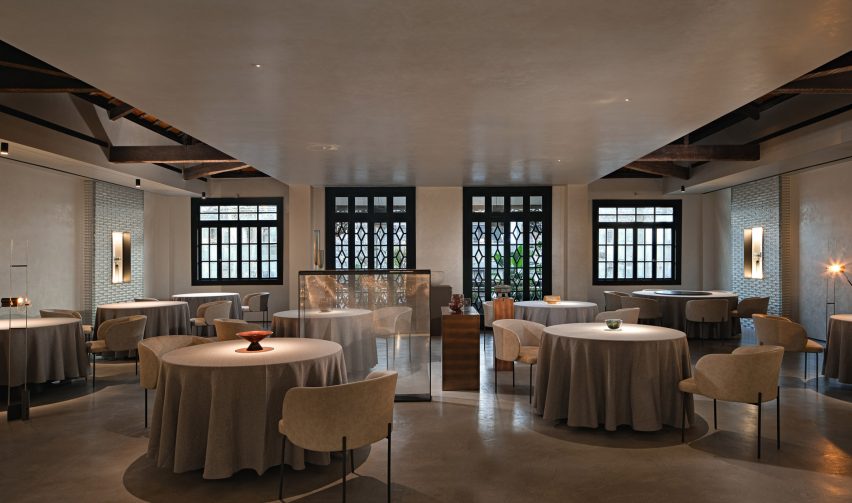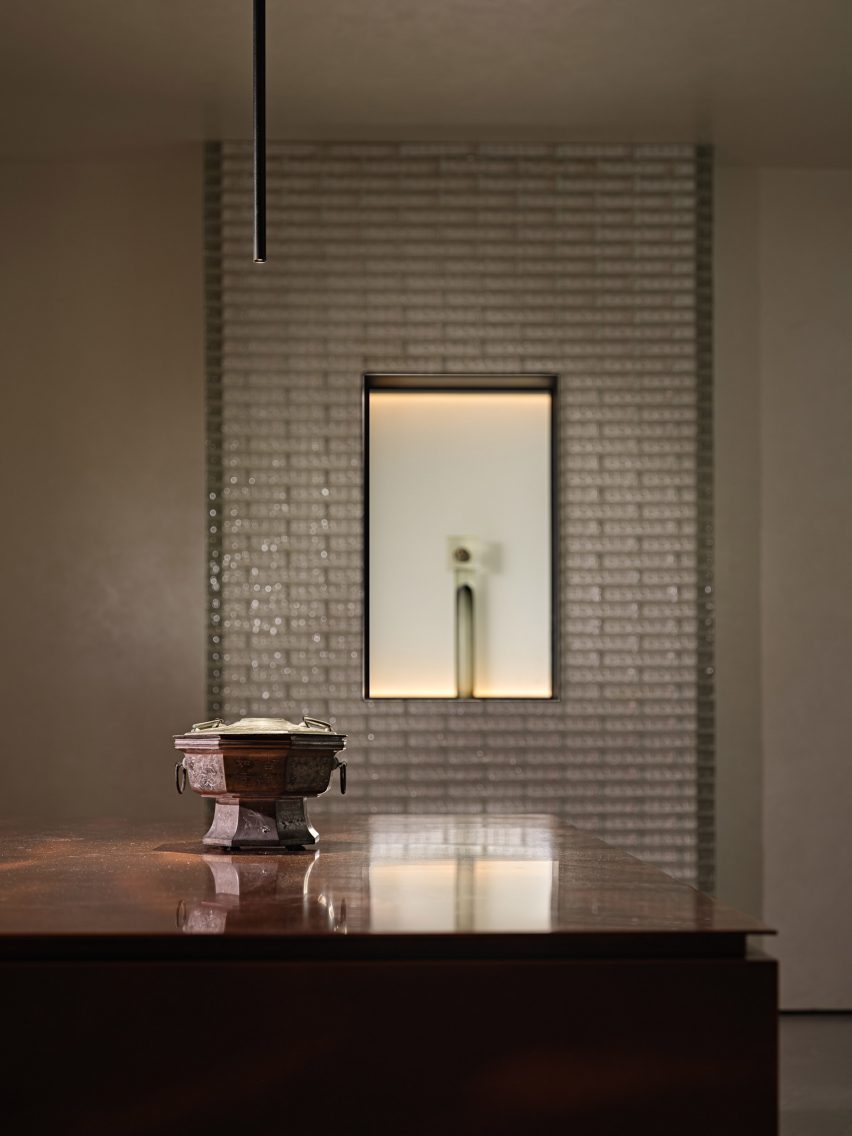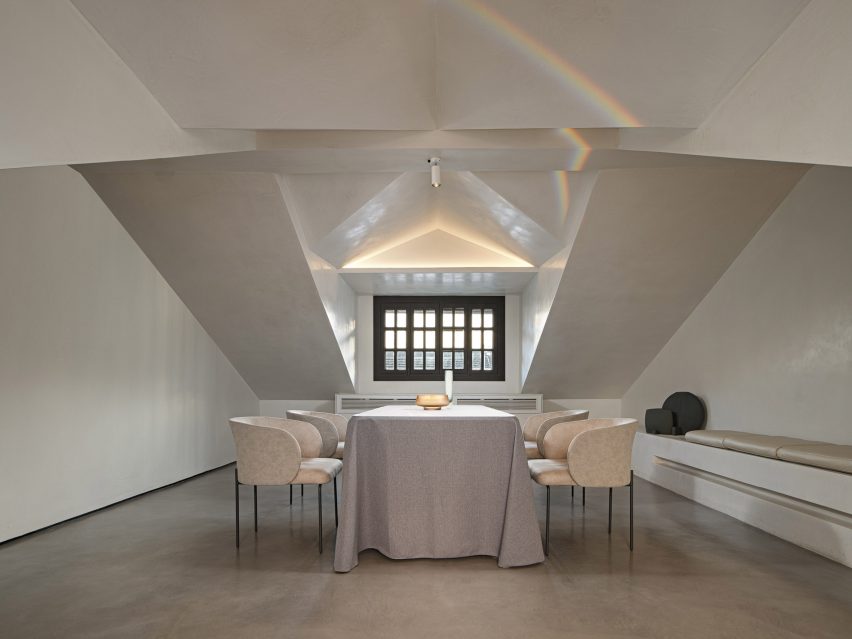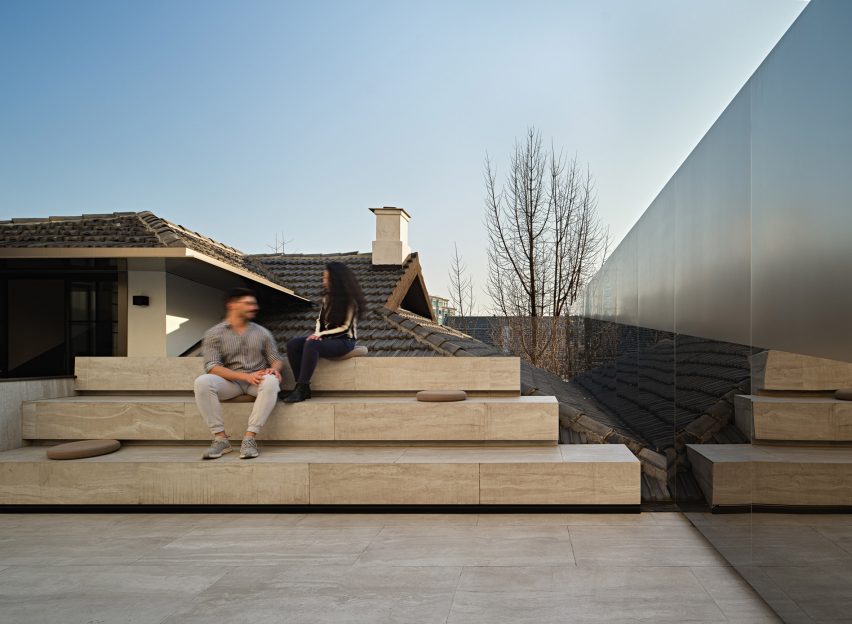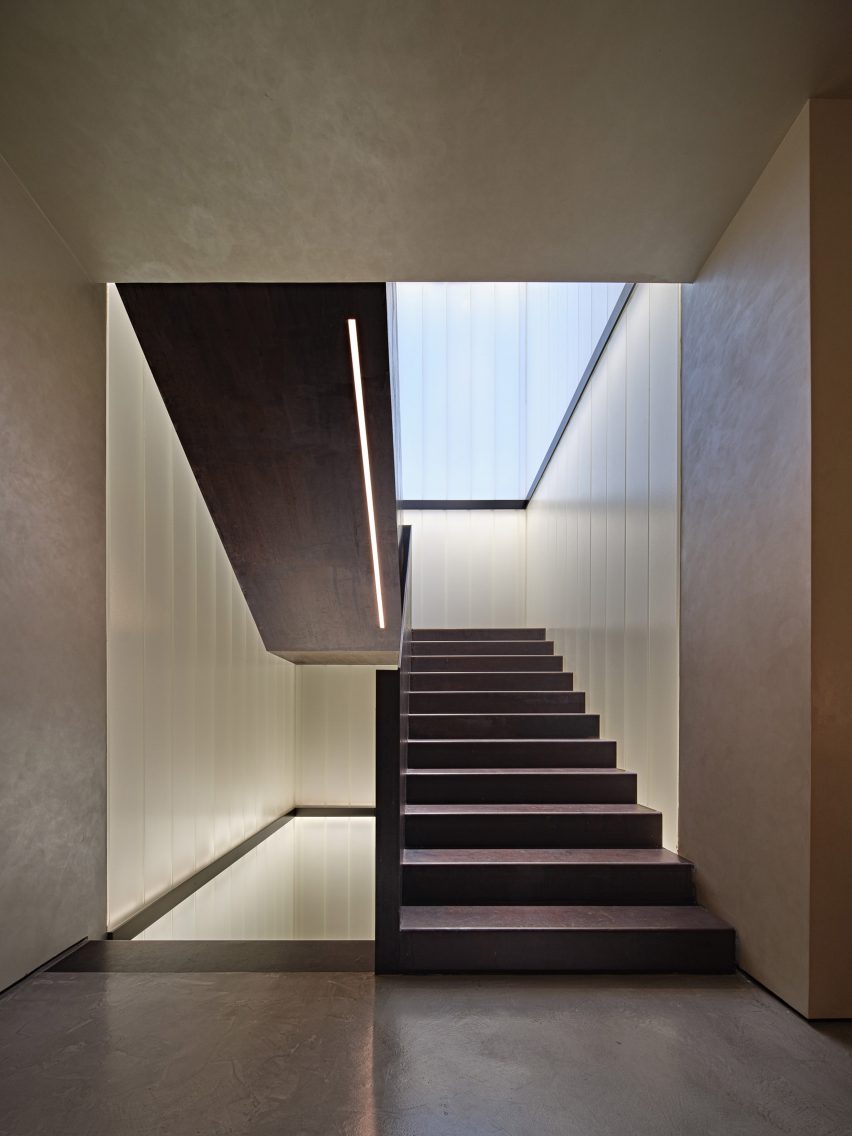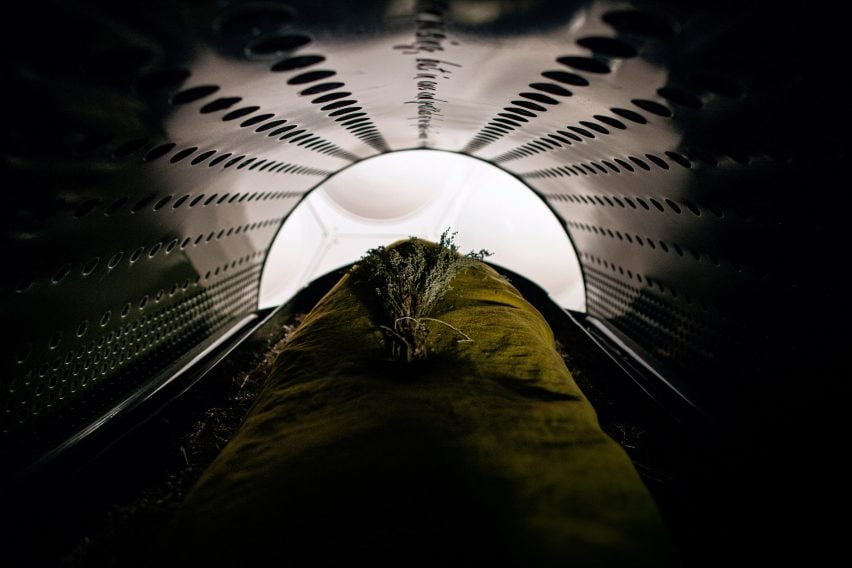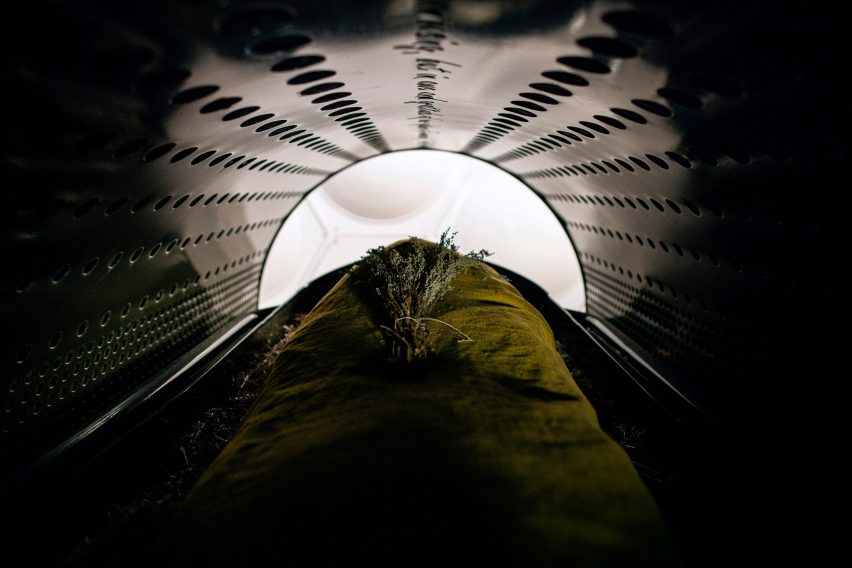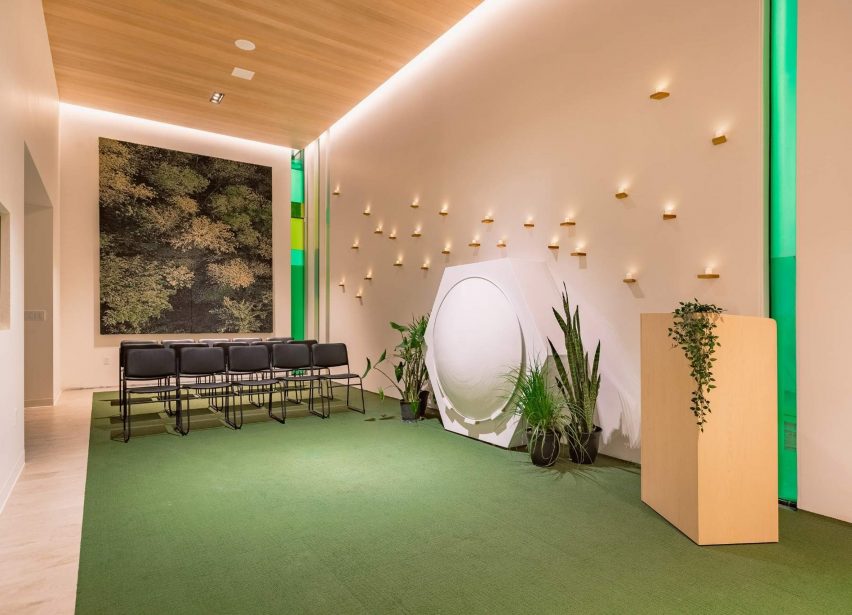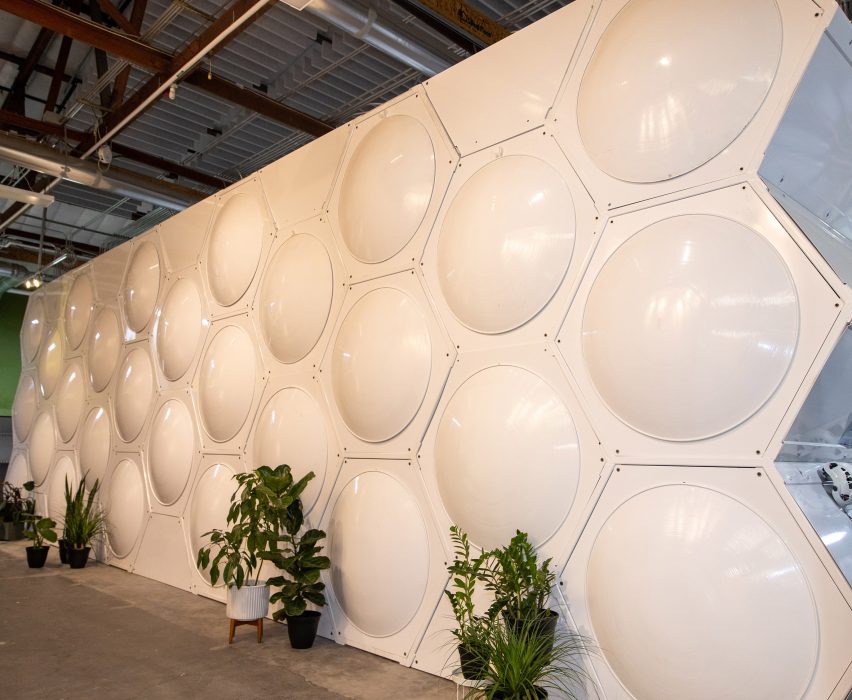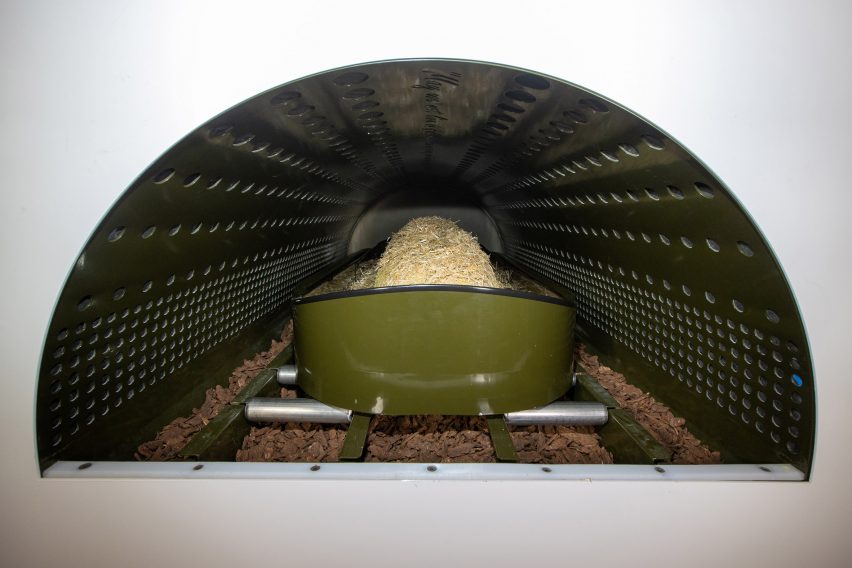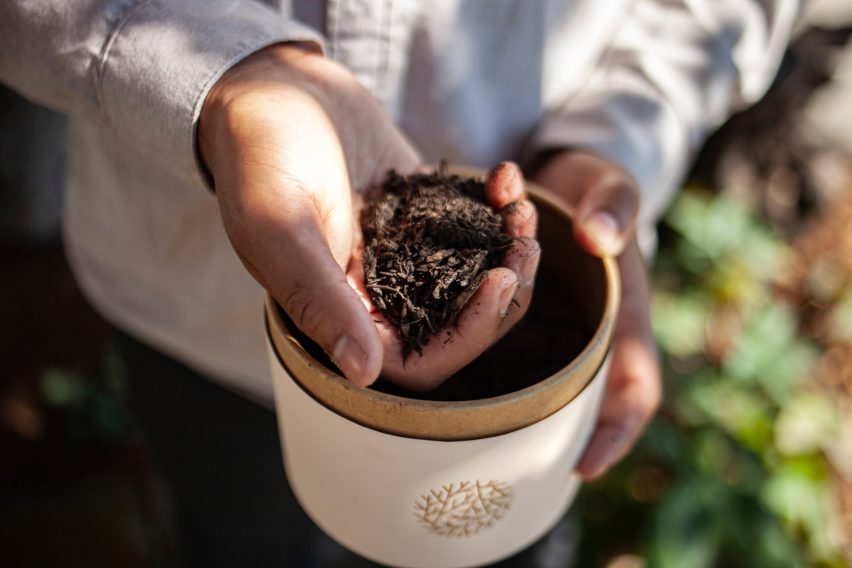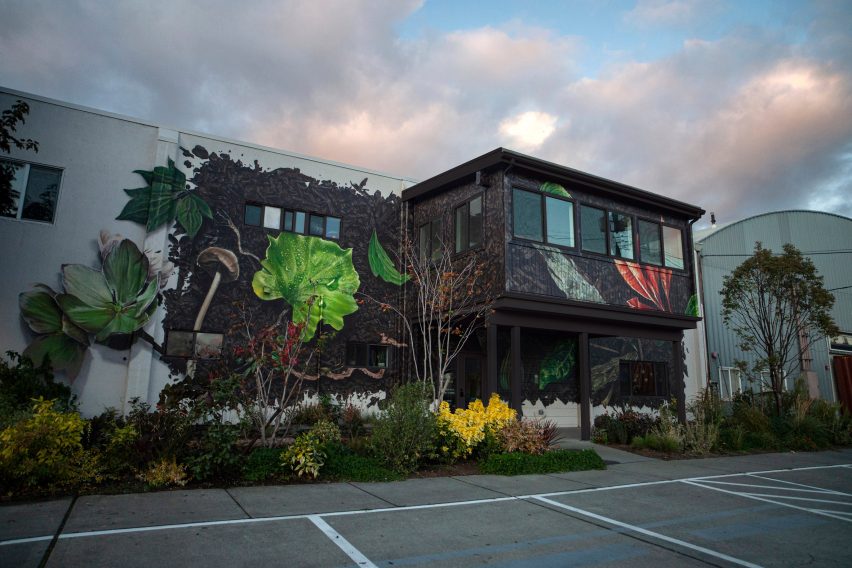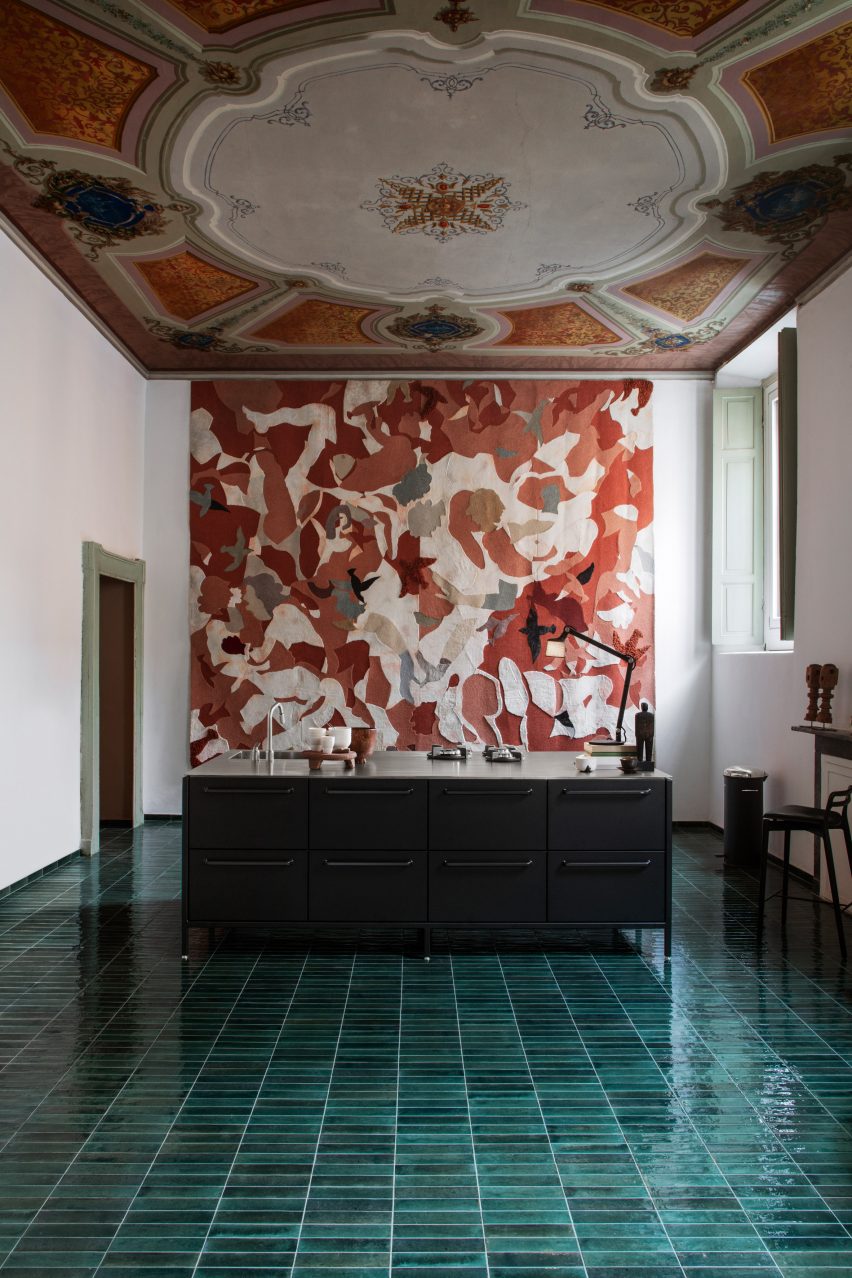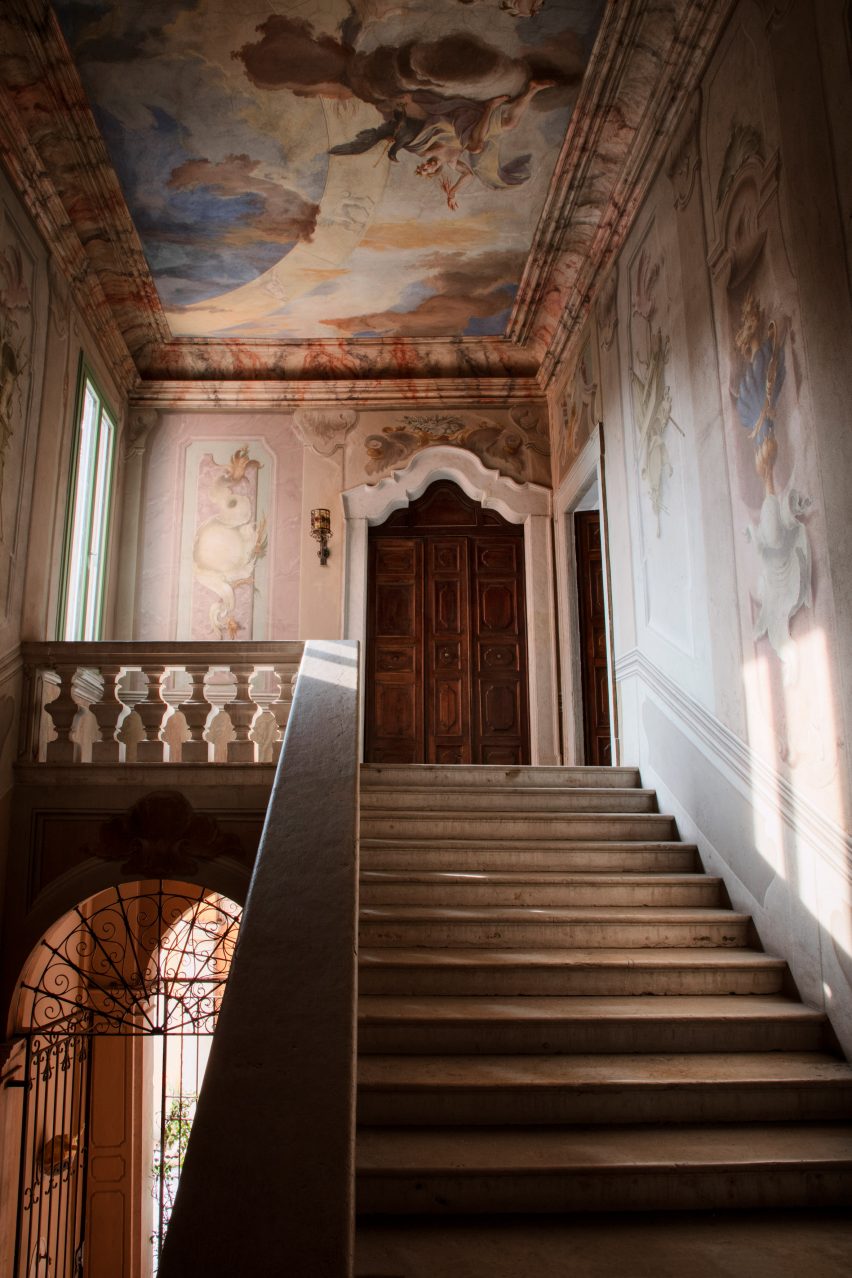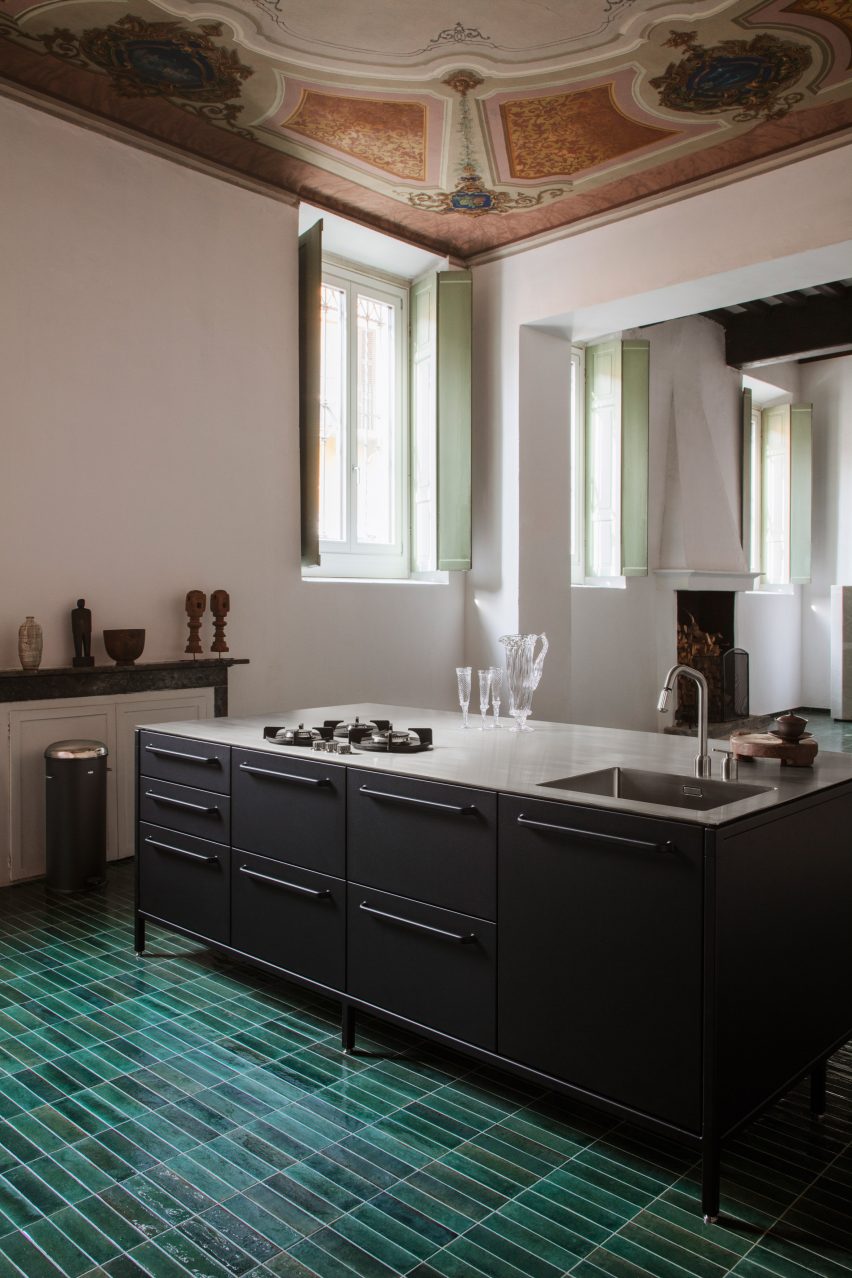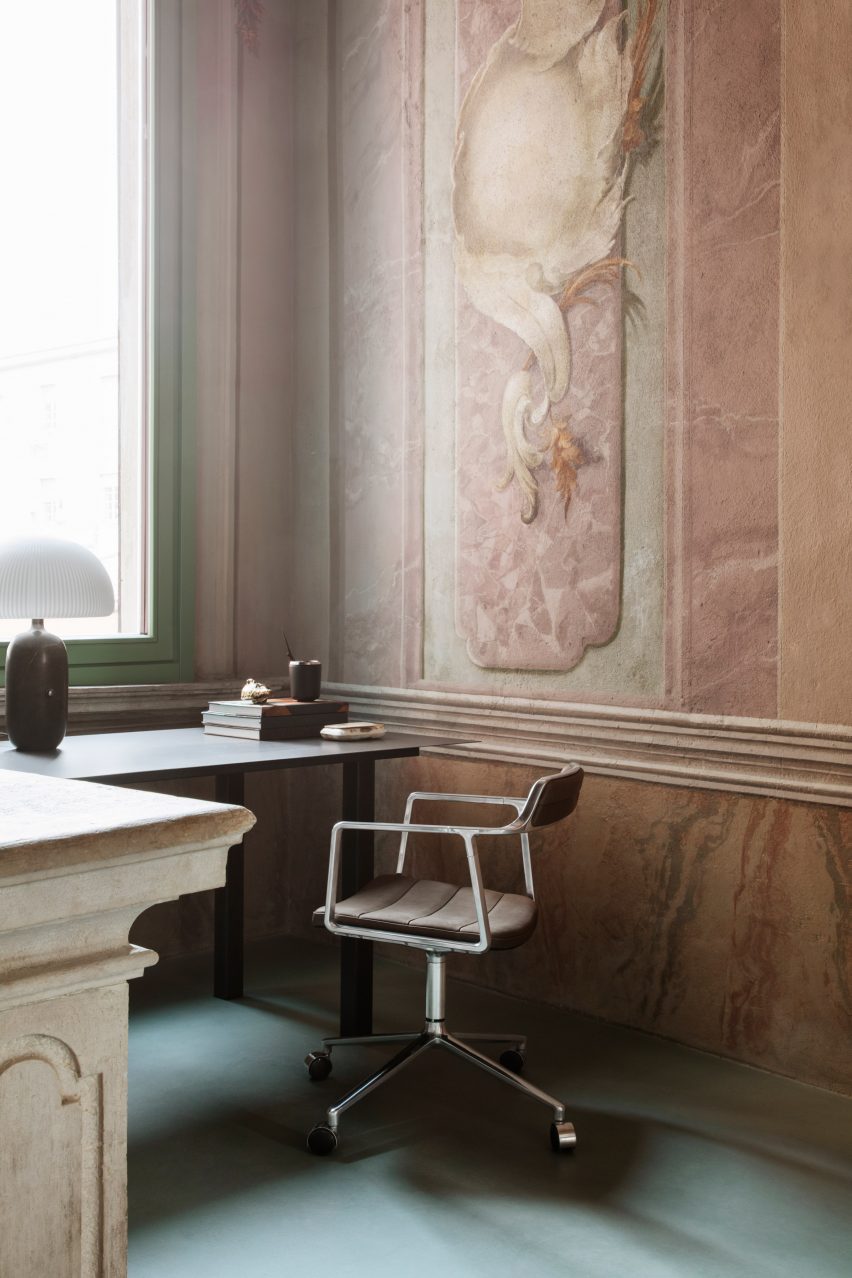Gonzalez Haase AAS includes rammed-earth “islands” at clothing store
Architecture studio Gonzalez Haase AAS has completed a store on London’s Regent Street for Icelandic clothing brand 66º North, featuring curved walls and freestanding plinths made from rammed earth.
The Berlin-based studio headed by Pierre Jorge Gonzalez and Judith Haase set out to create a holistic concept for the store that represents Iceland in an original way, rather than relying on stereotypes.
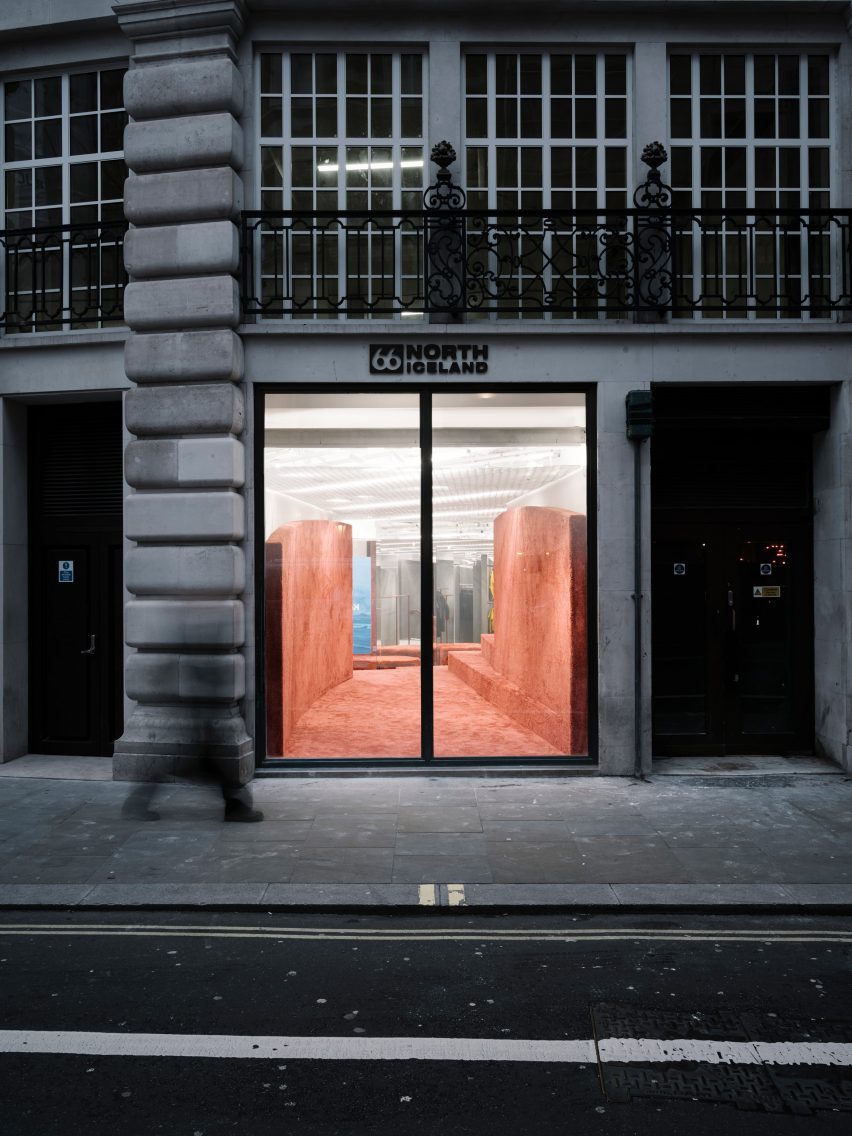
Gonzalez Haase AAS let the natural elements and the country’s geology inform key design features such as curved grey walls that evoke the shifting weather and rammed-earth islands that represent the earth.
“The weather in Iceland is a very real and prominent feature in the land and we classified this as static (the island) and forever changing (the weather),” the studio explained. “The static island of Iceland stands still in comparison to the constantly evolving and adapting weather, but this influences the perception of the island.”
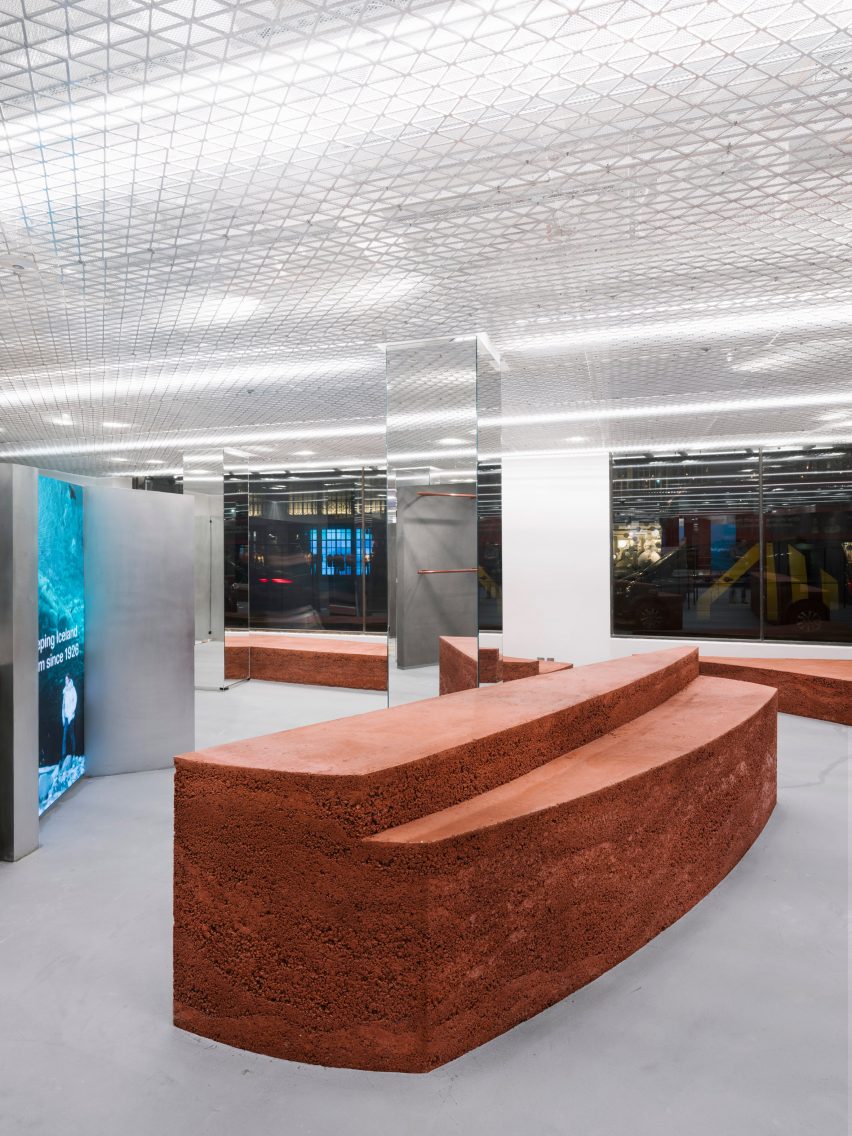
Upon entering the space, visitors encounter a series of curved walls rendered in natural pigmented clay sourced from Cornwall in the south of England.
The designers said the use of different grey tones represents the changing weather: “the immaterial, movement, changing, blurry and informal”.

The curved walls vary in height and frame different views within the store. At the entrance, one of the walls stretches back 18 metres, drawing the viewer’s gaze into the space and offering a tactile introduction to the experiential interior.
“These curved walls create different perspectives and atmospheres,” the design team added. “They sit in front of the existing white walls to create a dramatic foreground of rolling soft curves.”
A series of monumental rammed-earth islands are inserted throughout the floor plan, adding colour and texture that evokes the earth and magma of Iceland’s volcanic landscape.
The islands were created by artist Lennart Frank, who cast and sculpted them from an aggregate mix of different lava rocks to create a layered effect.

A combination of pigmented aggregate and sand gives the islands their reddish-brown hue, while the rugged texture brings a tactile element to the space that complements the brand’s clothing.
The earthy tones are echoed in the metal clothes rails, as well as in the colour of a carpet applied to the surfaces within a more intimate space at the rear of the store.
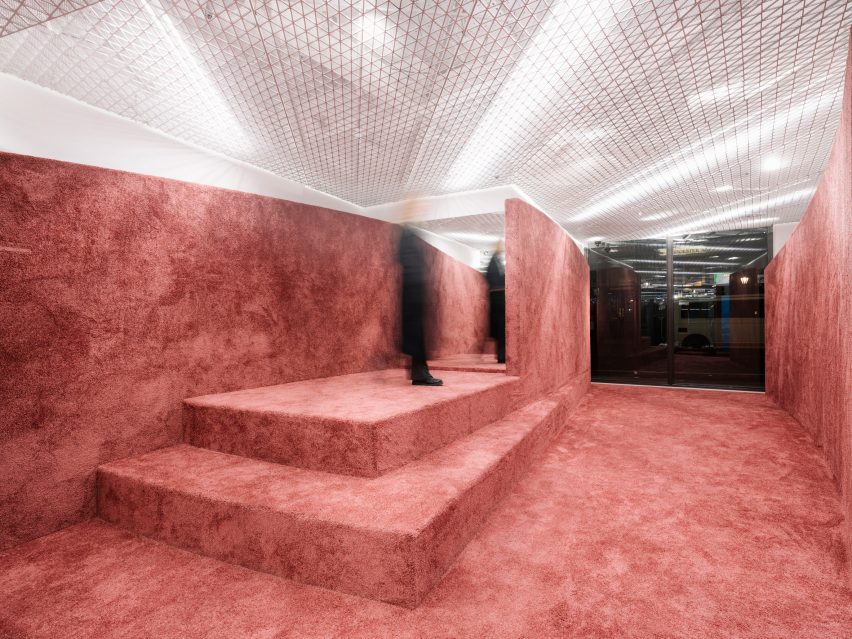
A custom-made mesh ceiling was designed to evoke a misty white sky, while also concealing lights and technical equipment.
Mirrors and screens displaying films of the Icelandic landscape help to define the flow of movement through the space and add a playful dimension to the shopping experience.

Gonzalez and Haase founded their Berlin-based studio in 1999. The firm works on commercial, residential and cultural projects, developing spatial concepts and experiences that foreground the interplay between light and architecture.
Previous interiors designed by Gonzalez Haase AAS include a minimal office for a Berlin communications firm and a sparse, white-walled concept store in Lisbon that occupies a disused warehouse.
The photography is by Thomas Meyer, Ostkreuz Photography.

